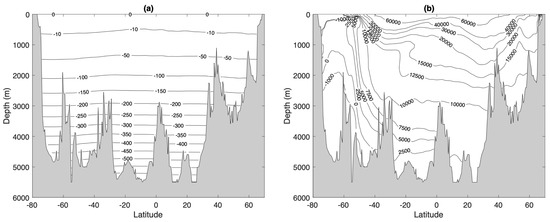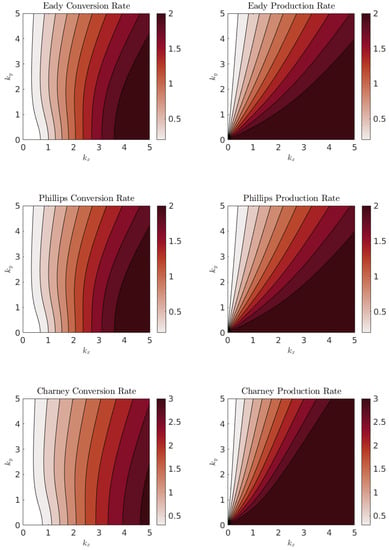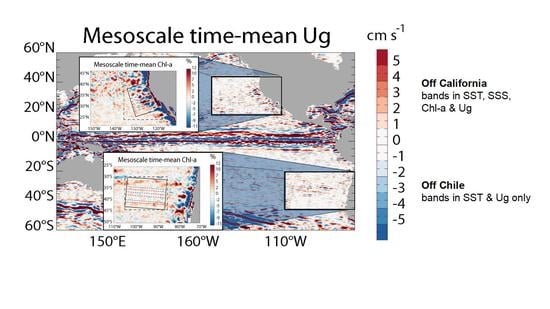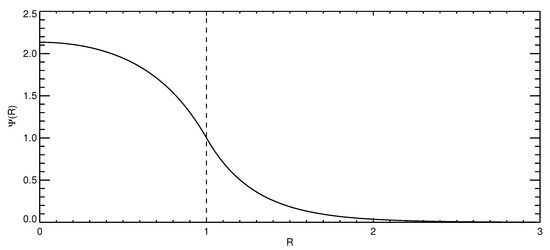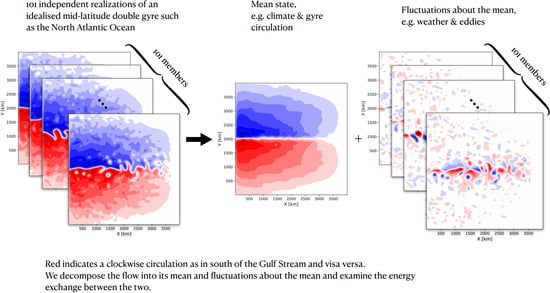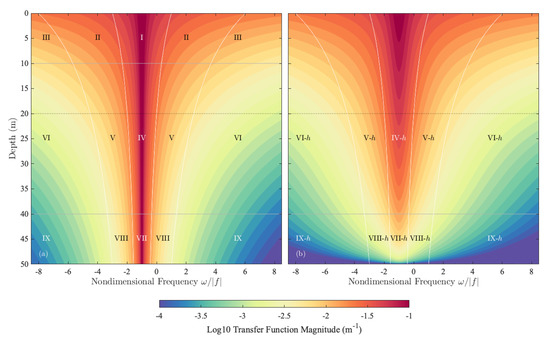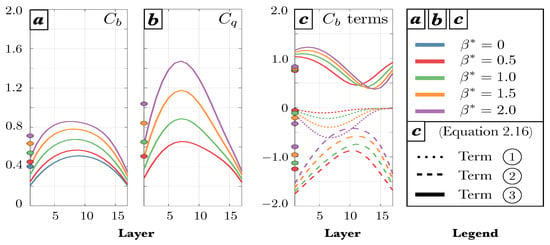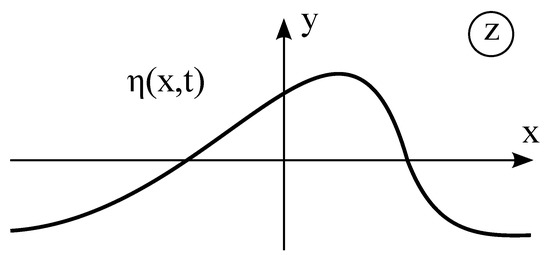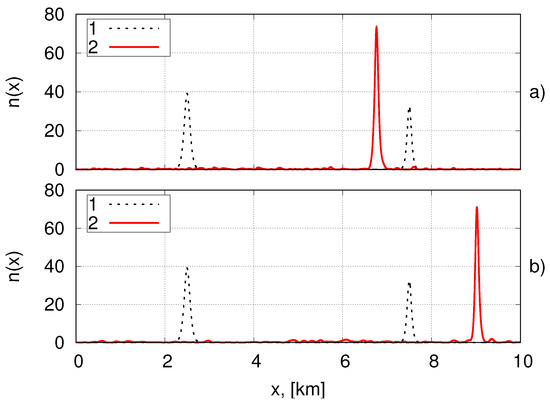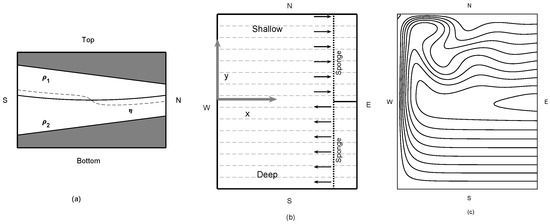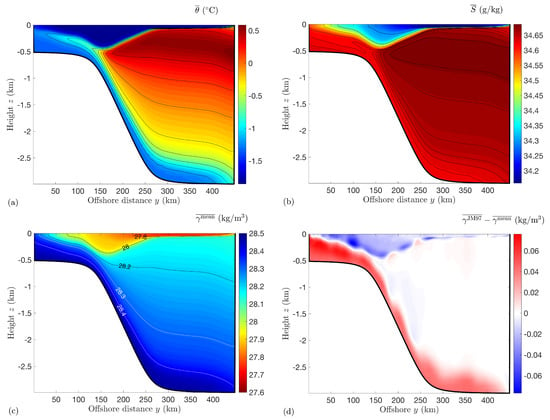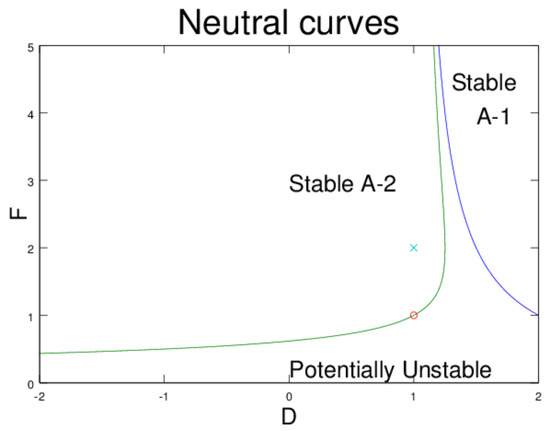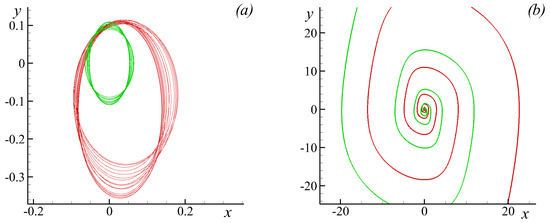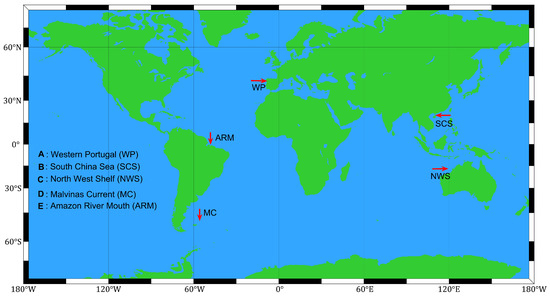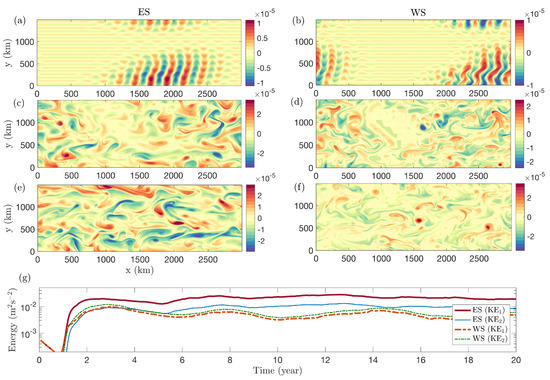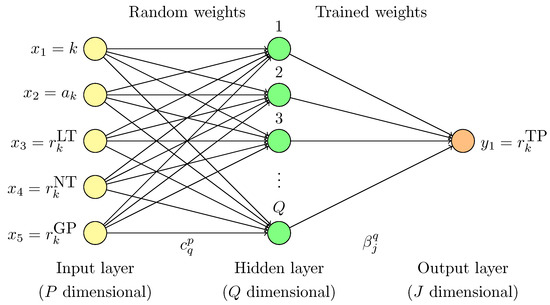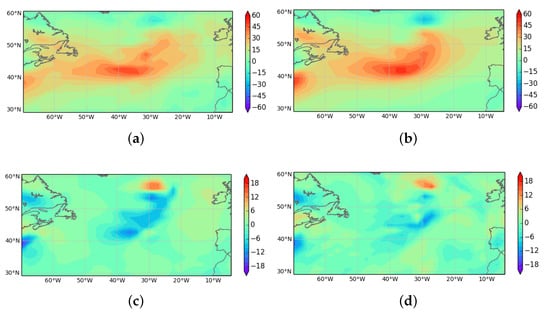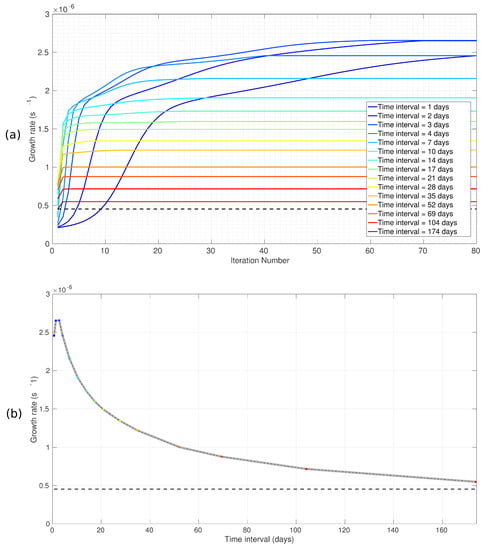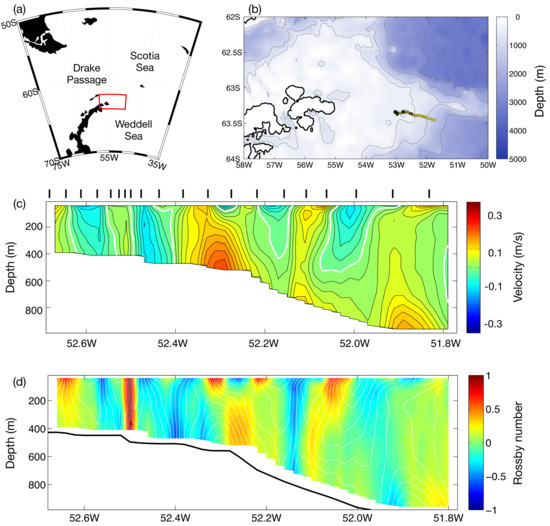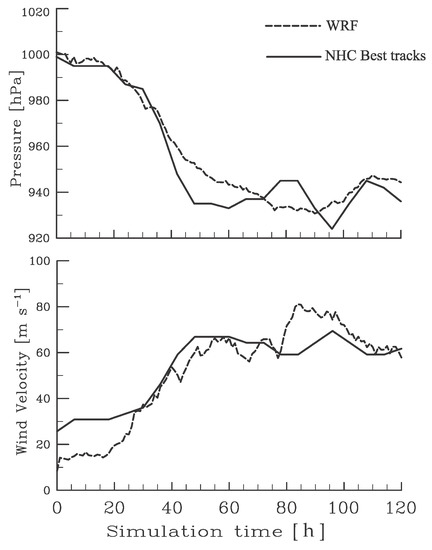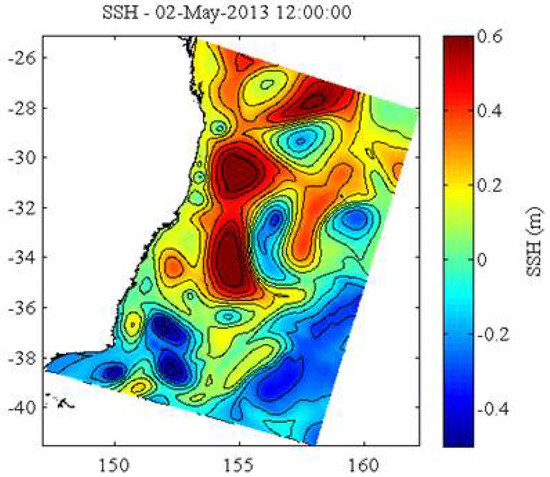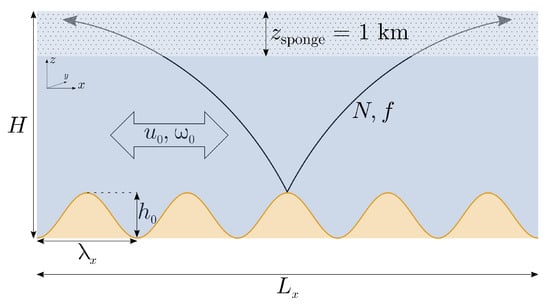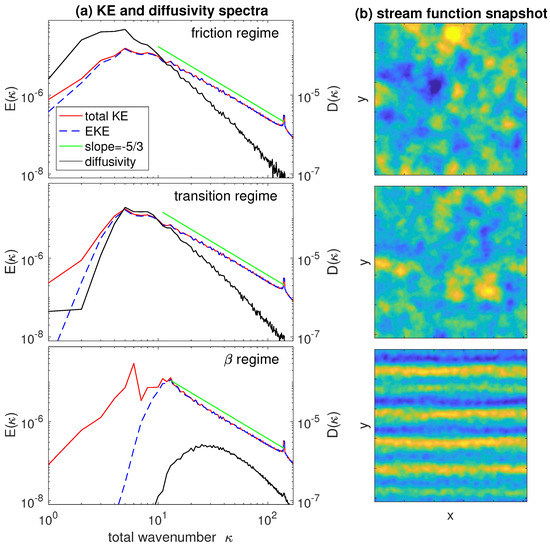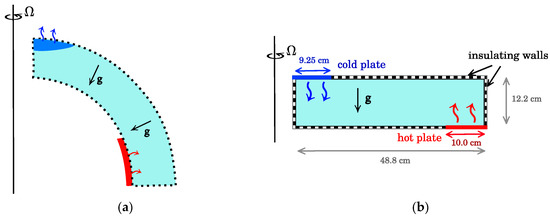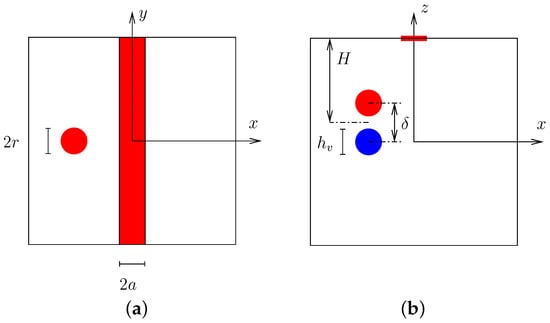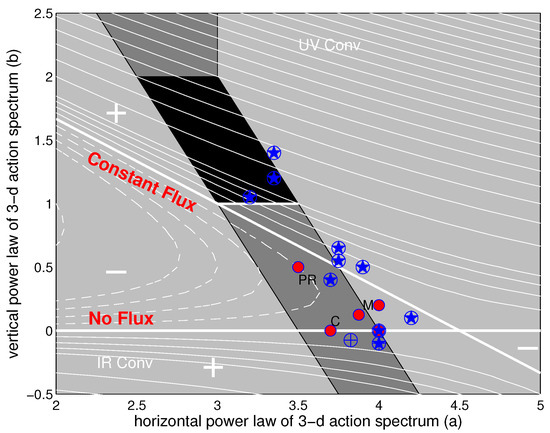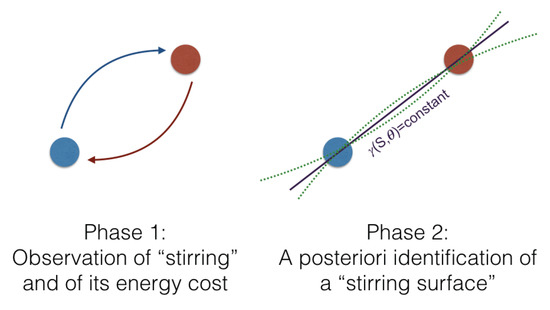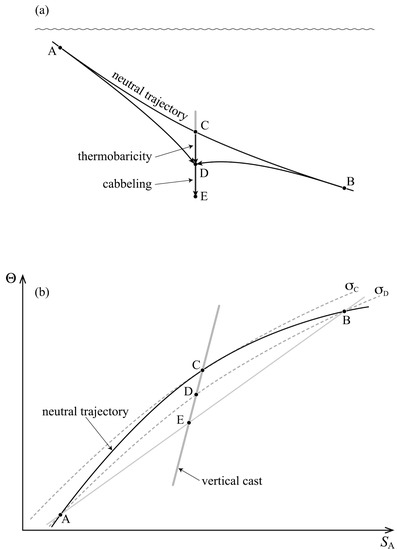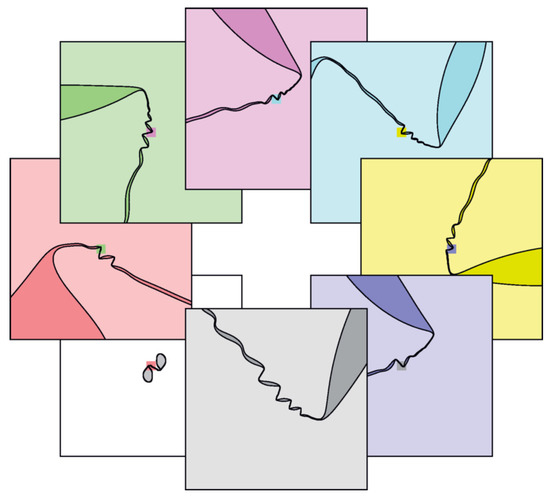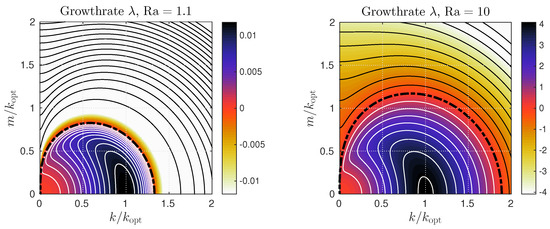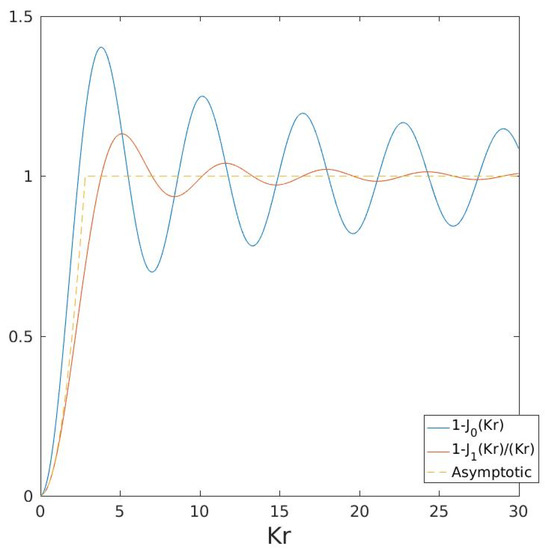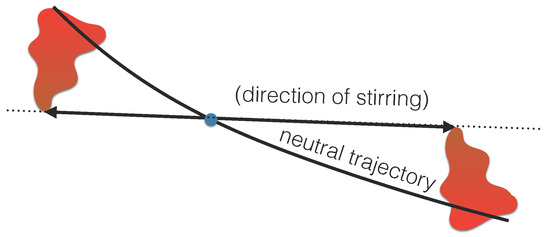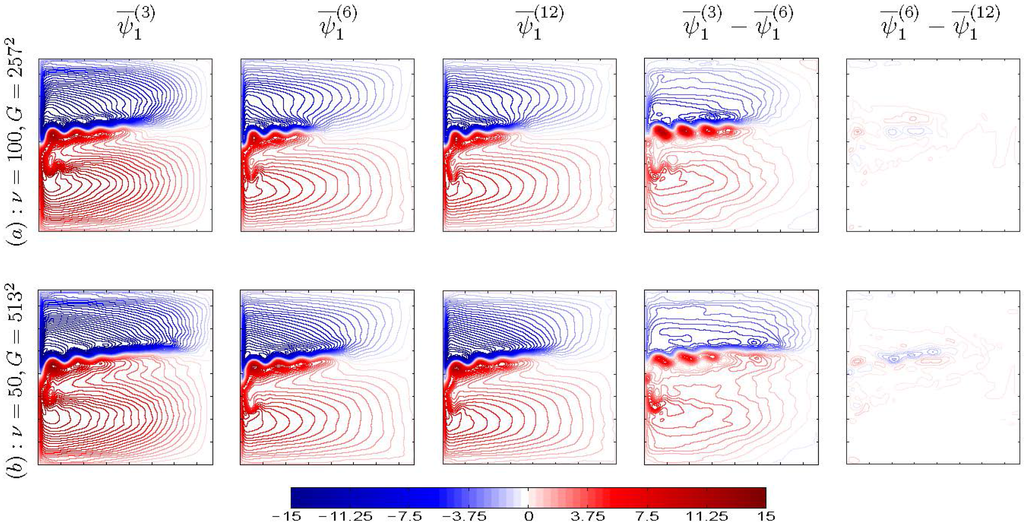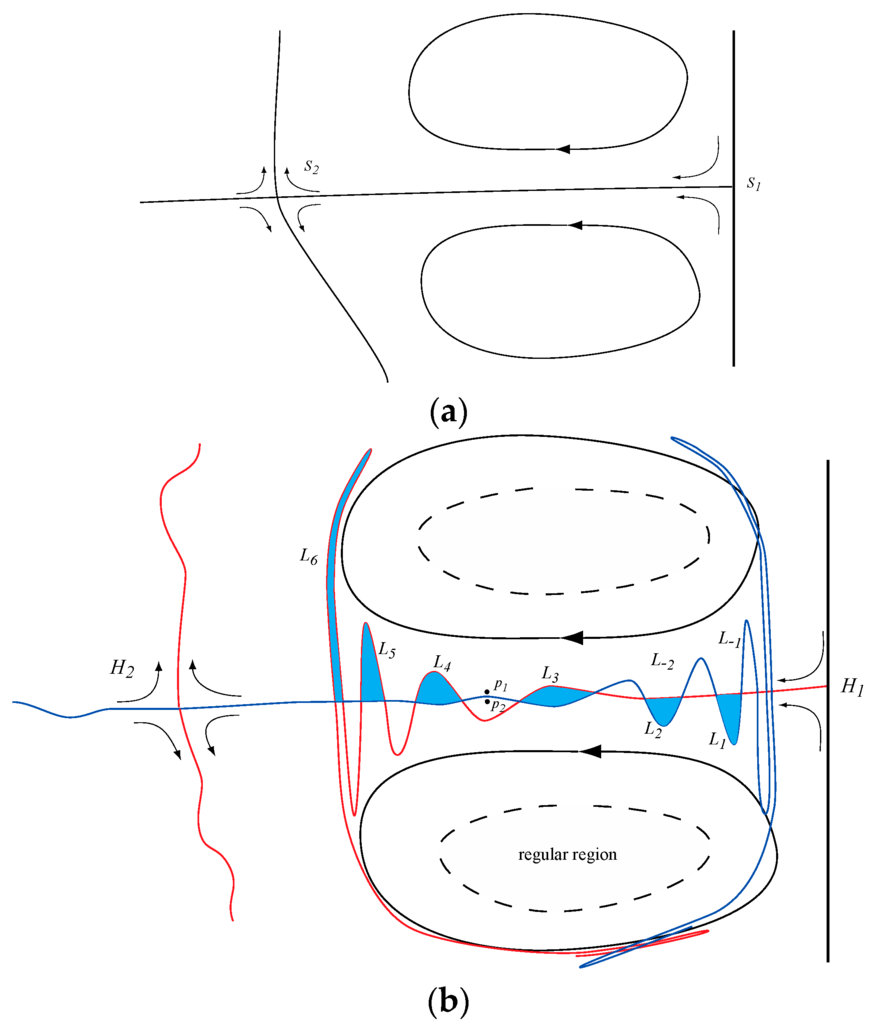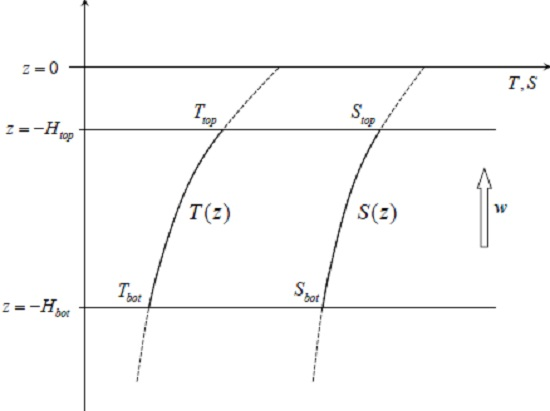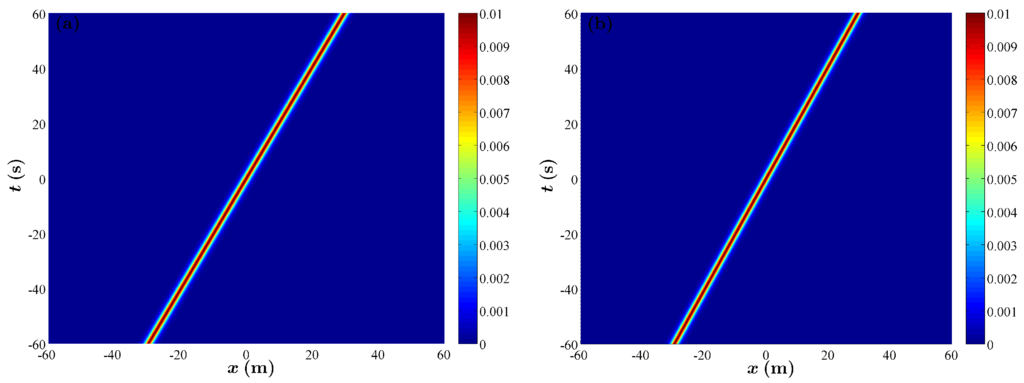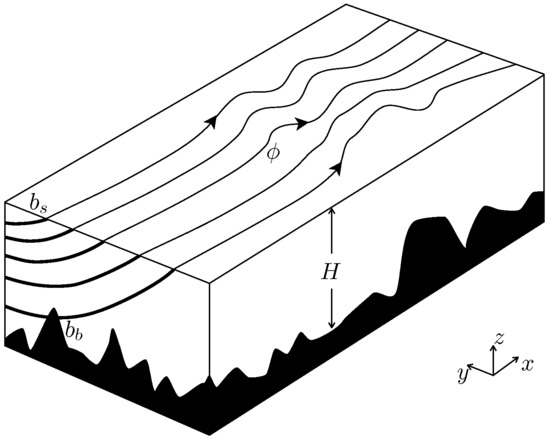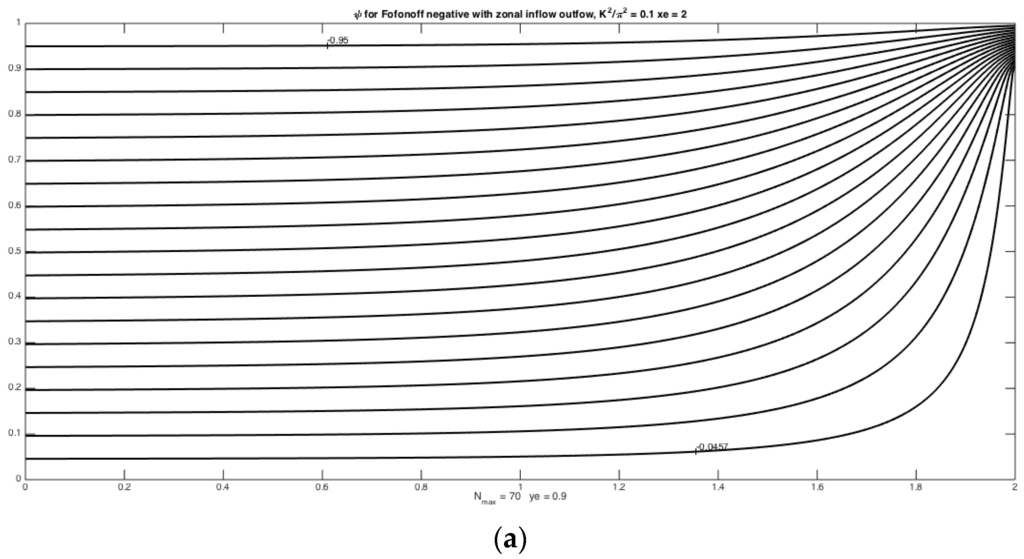Geophysical Fluid Dynamics
(Closed)
Share This Topical Collection
Editor
Topical Collection Information
Dear Colleagues,
Geophysical Fluid Dynamics (GFD) is a relatively young, but rapidly growing, branch of fluid mechanics that deals with a great variety of complex multiscale flow patterns and distributions of material properties arising in planetary atmospheres and oceans. These flow patterns are typically controlled by planetary rotation, various boundary conditions, and ubiquitous fluid density gradients. They interact with each other and combine on large scales to establish the climate. GFD employs mathematical analysis and computational modeling to deal with fundamental aspects, analyses and, ultimately, interpretations of the observed phenomena. To a large degree, the observed complexity of geophysical motions is due to the nonlinearity of the fluid dynamics, which connects GFD research with other branches of fluid mechanics. The Special Issue, “Geophysical Fluid Dynamics”, of the journal welcomes your new research contributions to the field.
Prof. Dr. Pavel S. Berloff
Collection Editor
Manuscript Submission Information
Manuscripts should be submitted online at www.mdpi.com by registering and logging in to this website. Once you are registered, click here to go to the submission form. Manuscripts can be submitted until the deadline. All submissions that pass pre-check are peer-reviewed. Accepted papers will be published continuously in the journal (as soon as accepted) and will be listed together on the collection website. Research articles, review articles as well as short communications are invited. For planned papers, a title and short abstract (about 100 words) can be sent to the Editorial Office for announcement on this website.
Submitted manuscripts should not have been published previously, nor be under consideration for publication elsewhere (except conference proceedings papers). All manuscripts are thoroughly refereed through a single-blind peer-review process. A guide for authors and other relevant information for submission of manuscripts is available on the Instructions for Authors page. Fluids is an international peer-reviewed open access monthly journal published by MDPI.
Please visit the Instructions for Authors page before submitting a manuscript.
The Article Processing Charge (APC) for publication in this open access journal is 1800 CHF (Swiss Francs).
Submitted papers should be well formatted and use good English. Authors may use MDPI's
English editing service prior to publication or during author revisions.
Keywords
- nonlinear dynamics
- general circulation of atmospheres and oceans
- geophysical turbulence, vortices and waves
- parameterizations of small-scale processes
- material transport and mixing
- hydrodynamic instabilities
- buoyancy driven processes
- boundary layer processes
Published Papers (50 papers)
Open AccessArticle
On the Determination of the 3D Velocity Field in Terms of Conserved Variables in a Compressible Ocean
by
Rémi Tailleux
Cited by 1 | Viewed by 1796
Abstract
Explicit expressions of the 3D velocity field in terms of the conserved quantities of ideal fluid thermocline theory, namely the Bernoulli function, density, and potential vorticity, are generalised in this paper to a compressible ocean with a realistic nonlinear equation of state. The
[...] Read more.
Explicit expressions of the 3D velocity field in terms of the conserved quantities of ideal fluid thermocline theory, namely the Bernoulli function, density, and potential vorticity, are generalised in this paper to a compressible ocean with a realistic nonlinear equation of state. The most general such expression is the ‘inactive wind’ solution, an exact nonlinear solution of the inviscid compressible Navier–Stokes equation that satisfies the continuity equation as a consequence of Ertel’s potential vorticity theorem. However, due to the non-uniqueness of the choice of the Bernoulli function, such expressions are not unique and primarily differ in the magnitude of their vertical velocity component. Due to the thermobaric nonlinearity of the equation of state, the expression for the 3D velocity field of a compressible ocean is found to resemble its ideal fluid counterpart only if constructed using the available form of the Bernoulli function, the Bernoulli equivalent of Lorenz’s available potential energy (APE). APE theory also naturally defines a quasi-material, approximately neutral density variable known as the Lorenz reference density. This density variable, in turn, defines a potential vorticity variable that is minimally affected by thermobaric production, thus providing all the necessary tools for extending most results of ideal fluid thermocline theory to a compressible ocean.
Full article
►▼
Show Figures
Open AccessArticle
Limits on the Rate of Conversion of Potential to Kinetic Energy in Quasigeostrophic Turbulence
by
Ian Grooms
Viewed by 1597
Abstract
Flow configurations that maximize the instantaneous rate of conversion from potential to kinetic energy are sought using a combination of analytical and numerical methods. A hydrostatic model is briefly investigated, but the presence of unrealistic ageostrophic flow configurations renders the results unrealistic. In
[...] Read more.
Flow configurations that maximize the instantaneous rate of conversion from potential to kinetic energy are sought using a combination of analytical and numerical methods. A hydrostatic model is briefly investigated, but the presence of unrealistic ageostrophic flow configurations renders the results unrealistic. In the quasigeostrophic (QG) model, flow configurations that locally optimize the conversion rate are found, but it remains unclear if these flow configurations produce the global maximum conversion rate. The difficulty is associated with the fact that in the QG model, the vertical velocity is a quadratic function of the QG streamfunction, which renders the conversion rate a cubic function of the QG streamfunction. For these locally maximal conversion rates, the rate of conversion depends on the horizontal length scale of the flow: for scales larger than the deformation radius, the maximal rates are small and decrease as the horizontal scale increases; for scales smaller than the deformation radius, the maximal conversion rate rises until it becomes comparable to the maximal rate at which potential energy can be extracted from the mean flow.
Full article
►▼
Show Figures
Open AccessArticle
Probability Distribution of Extreme Events in a Baroclinic Wave Laboratory Experiment
by
Uwe Harlander, Ion Dan Borcia, Miklos Vincze and Costanza Rodda
Cited by 7 | Viewed by 1489
Abstract
Atmospheric westerly jet streams are driven by temperature differences between low and high latitudes and the rotation of the Earth. Meandering jet streams and propagating Rossby waves are responsible for the variable weather in the mid-latitudes. Moreover, extreme weather events such as heat
[...] Read more.
Atmospheric westerly jet streams are driven by temperature differences between low and high latitudes and the rotation of the Earth. Meandering jet streams and propagating Rossby waves are responsible for the variable weather in the mid-latitudes. Moreover, extreme weather events such as heat waves and cold spells are part of the jet stream dynamics. For many years, a simple analog in the form of a simplified laboratory experiment, the differentially heated rotating annulus, has provided insight into the dynamics of the meandering jet stream. In the present study, probability density distributions of extreme events from a long-term laboratory experiment are studied and compared to the atmospheric probability density distributions. Empirical distributions of extreme value monthly block data are derived for the experimental and atmospheric cases. Generalized extreme value distributions are adjusted to the empirical distributions, and the distribution parameters are compared. Good agreement was found, but the distributions of the experimental data showed a shift toward larger extreme values, and some explanations for this shift are suggested. The results indicate that the laboratory model might be a useful tool for investigating changes in extreme event distributions due to climate change. In the laboratory context, the change can be modeled by an increase in total temperature accompanied by a reduction in the radial heat contrast.
Full article
►▼
Show Figures
Open AccessArticle
Similarities and Contrasts in Time-Mean Striated Surface Tracers in Pacific Eastern Boundary Upwelling Systems: The Role of Ocean Currents in Their Generation
by
Ali Belmadani, Pierre-Amaël Auger, Nikolai Maximenko, Katherine Gomez and Sophie Cravatte
Cited by 1 | Viewed by 2644
Abstract
Eastern boundary upwelling systems feature strong zonal gradients of physical and biological properties between cool, productive coastal oceans and warm, oligotrophic subtropical gyres. Zonal currents and jets (striations) are therefore likely to contribute to the transport of water properties between coastal and open
[...] Read more.
Eastern boundary upwelling systems feature strong zonal gradients of physical and biological properties between cool, productive coastal oceans and warm, oligotrophic subtropical gyres. Zonal currents and jets (striations) are therefore likely to contribute to the transport of water properties between coastal and open oceanic regions. For the first time, multi-sensor satellite data are used to characterize the time-mean signatures of striations in sea surface temperature (SST), salinity (SSS), and chlorophyll-a (Chl-a) in subtropical eastern North/South Pacific (ENP/ESP) upwelling systems. In the ENP, tracers exhibit striated patterns extending up to ~2500 km offshore. Striated signals in SST and SSS are highly correlated with quasi-zonal jets, suggesting that these jets contribute to SST/SSS mesoscale patterns via zonal advection. Striated Chl-a anomalies are collocated with sea surface height (SSH) bands, a possible result of mesoscale eddy trains trapping nutrients and forming striated signals. In the ESP, the signature of striations is only found in SST and coincides with the SSH bands, consistently with quasi-zonal jets located outside major zonal tracer gradients. An interplay between large-scale SST/SSS advection by the quasi-zonal jets, mesoscale SST/SSS advection by the large-scale meridional flow, and eddy advection may explain the persistent ENP hydrographic signature of striations. These results underline the importance of quasi-zonal jets for surface tracer structuring at the mesoscale.
Full article
►▼
Show Figures
Open AccessArticle
Generation of Localised Vertical Streams in Unstable Stratified Atmosphere
by
Oleg Onishchenko, Viktor Fedun, Istvan Ballai, Aleksandr Kryshtal and Gary Verth
Cited by 3 | Viewed by 2150
Abstract
A new model of axially symmetric concentrated vortex generation was developed herein. In this work, the solution of a nonlinear equation for internal gravity waves in an unstable stratified atmosphere was obtained and analysed in the framework of ideal hydrodynamics. The related expressions
[...] Read more.
A new model of axially symmetric concentrated vortex generation was developed herein. In this work, the solution of a nonlinear equation for internal gravity waves in an unstable stratified atmosphere was obtained and analysed in the framework of ideal hydrodynamics. The related expressions for the velocities in the inner and outer regions of the vortex were described by Bessel functions and modified zeroth-order Bessel functions. The proposed new nonlinear analytical model allows the study of the structure and dynamics of vortices in the radial region. The formation of jets (i.e., structures elongated in the vertical direction with finite components of the poloidal (radial and vertical) velocities that grow exponentially in time in an unstable stratified atmosphere) was also analysed. The characteristic growth time was determined by the inverse growth rate of instability. It is shown that a seed vertical vorticity component may be responsible for the formation of vortices with a finite azimuthal velocity.
Full article
►▼
Show Figures
Open AccessArticle
The Seasonal Variability of the Ocean Energy Cycle from a Quasi-Geostrophic Double Gyre Ensemble
by
Takaya Uchida, Bruno Deremble and Thierry Penduff
Cited by 7 | Viewed by 3093
Abstract
With the advent of submesoscale
permitting basin-scale ocean simulations, the seasonality of mesoscale
eddies with kinetic energies peaking in summer has been commonly attributed to submesoscale eddies feeding back onto the mesoscale via
[...] Read more.
With the advent of submesoscale
permitting basin-scale ocean simulations, the seasonality of mesoscale
eddies with kinetic energies peaking in summer has been commonly attributed to submesoscale eddies feeding back onto the mesoscale via an inverse energy cascade under the constraint of stratification and Earth’s rotation. In contrast, by running a 101-member, seasonally forced, three-layer quasi-geostrophic (QG) ensemble configured to represent an idealized double-gyre system of the subtropical and subpolar basin, we find that the mesoscale kinetic energy shows a seasonality consistent with the summer peak without resolving the submesoscales; by definition, a QG model only resolves small Rossby and Froude number dynamics (
) while submesoscale dynamics are associated with
. Here, by quantifying the Lorenz cycle of the mean and eddy energy, defined as the ensemble mean and fluctuations about the mean, respectively, we propose a different mechanism from the inverse energy cascade. During summer, when the Western Boundary Current is stabilized and strengthened due to increased stratification, stronger mesoscale eddies are shed from the separated jet. Conversely, the opposite occurs during the winter; the separated jet destablizes and results in overall lower mean and eddy kinetic energies despite the domain being more susceptible to baroclinic instability from weaker stratification.
Full article
►▼
Show Figures
Open AccessArticle
A Unifying Perspective on Transfer Function Solutions to the Unsteady Ekman Problem
by
Jonathan M. Lilly and Shane Elipot
Cited by 4 | Viewed by 3161
Abstract
The unsteady Ekman problem involves finding the response of the near-surface currents to wind stress forcing under linear dynamics. Its solution can be conveniently framed in the frequency domain in terms of a quantity that is known as the transfer function, the Fourier
[...] Read more.
The unsteady Ekman problem involves finding the response of the near-surface currents to wind stress forcing under linear dynamics. Its solution can be conveniently framed in the frequency domain in terms of a quantity that is known as the transfer function, the Fourier transform of the impulse response function. In this paper, a theoretical investigation of a fairly general transfer function form is undertaken with the goal of paving the way for future observational studies. Building on earlier work, we consider in detail the transfer function arising from a linearly-varying profile of the vertical eddy viscosity, subject to a no-slip lower boundary condition at a finite depth. The horizontal momentum equations, rendered linear by the assumption of horizontally uniform motion, are shown to transform to a modified Bessel’s equation for the transfer function. Two self-similarities, or rescalings that each effectively eliminate one independent variable, are identified, enabling the dependence of the transfer function on its parameters to be more readily assessed. A systematic investigation of asymptotic behaviors of the transfer function is then undertaken, yielding expressions appropriate for eighteen different regimes, and unifying the results from numerous earlier studies. A solution to a numerical overflow problem that arises in the computation of the transfer function is also found. All numerical code associated with this paper is distributed freely for use by the community.
Full article
►▼
Show Figures
Open AccessArticle
A Geometric Perspective on the Modulation of Potential Energy Release by a Lateral Potential Vorticity Gradient
by
Scott D. Bachman
Cited by 2 | Viewed by 2383
Abstract
The release of available potential energy by growing baroclinic instability requires the slope of the eddy fluxes to be shallower than that of mean density surfaces, where the amount of energy released depends on both the flux angle and the distance of fluid
[...] Read more.
The release of available potential energy by growing baroclinic instability requires the slope of the eddy fluxes to be shallower than that of mean density surfaces, where the amount of energy released depends on both the flux angle and the distance of fluid parcel excursions against the background density gradient. The presence of a lateral potential vorticity (PV) gradient is known to affect the growth rate and energy release by baroclinic instability, but often makes the mathematics of formal linear stability analysis intractable. Here the effects of a lateral PV gradient on baroclinic growth are examined by considering its effects on the slope of the eddy fluxes. It is shown that the PV gradient systematically shifts the unstable modes toward higher wavenumbers and creates a cutoff to the instability at large scales, both of which steepen the eddy flux angle and limit the amount of energy released. This effect may contribute to the severe inhibition of baroclinic turbulence in systems dominated by barotropic jets, making them less likely to transition to turbulence-dominated flow regimes.
Full article
►▼
Show Figures
Open AccessArticle
Computation of Density Perturbation and Energy Flux of Internal Waves from Experimental Data
by
Lucie Bordois, Jonas Nycander and Alexandre Paci
Viewed by 2314
Abstract
We hereby present two different spectral methods for calculating the density anomaly and the vertical energy flux from synthetic Schlieren data, for a periodic field of linear internal waves (IW) in a density-stratified fluid with a uniform buoyancy frequency. The two approaches operate
[...] Read more.
We hereby present two different spectral methods for calculating the density anomaly and the vertical energy flux from synthetic Schlieren data, for a periodic field of linear internal waves (IW) in a density-stratified fluid with a uniform buoyancy frequency. The two approaches operate under different assumptions. The first method (hereafter Mxzt) relies on the assumption of a perfectly periodic IW field in the three dimensions (
x,
z,
t), whereas the second method (hereafter MxtUp) assumes that the IW field is periodic in x and t and composed solely of wave components with downward phase velocity. The two methods have been applied to synthetic Schlieren data collected in the CNRM large stratified water flume. Both methods succeed in reconstructing the density anomaly field. We identify and quantify the source of errors of both methods. A new method mixing the two approaches and combining their respective advantages is then proposed for the upward energy flux. The work presented in this article opens new perspectives for density and energy flux estimates from laboratory experiments data.
Full article
►▼
Show Figures
Open AccessEditor’s ChoiceArticle
Soliton Turbulence in Approximate and Exact Models for Deep Water Waves
by
Dmitry Kachulin, Alexander Dyachenko and Vladimir Zakharov
Cited by 12 | Viewed by 3136
Abstract
We investigate and compare soliton turbulence appearing as a result of modulational instability of the homogeneous wave train in three nonlinear models for surface gravity waves: the nonlinear Schrödinger equation, the super compact Zakharov equation, and the fully nonlinear equations written in conformal
[...] Read more.
We investigate and compare soliton turbulence appearing as a result of modulational instability of the homogeneous wave train in three nonlinear models for surface gravity waves: the nonlinear Schrödinger equation, the super compact Zakharov equation, and the fully nonlinear equations written in conformal variables. We show that even at a low level of energy and average wave steepness, the wave dynamics in the nonlinear Schrödinger equation fundamentally differ from the dynamics in more accurate models. We study energy losses of wind waves due to their breaking for large values of total energy in the super compact Zakharov equation and in the exact equations and show that in both models, the wave system loses 50% of energy very slowly, during few days.
Full article
►▼
Show Figures
Open AccessEditor’s ChoiceArticle
Multiple Soliton Interactions on the Surface of Deep Water
by
Dmitry Kachulin, Alexander Dyachenko and Sergey Dremov
Cited by 11 | Viewed by 2446
Abstract
The paper presents the long-time dynamics with multiple collisions of breathers in the super compact Zakharov equation for unidirectional deep water waves. Solutions in the form of breathers were found numerically by the Petviashvili method. In the terms of envelope and the assumption
[...] Read more.
The paper presents the long-time dynamics with multiple collisions of breathers in the super compact Zakharov equation for unidirectional deep water waves. Solutions in the form of breathers were found numerically by the Petviashvili method. In the terms of envelope and the assumption of the narrow spectral width the super compact equation turns into the well known exact integrable model—nonlinear Schrödinger equation, and the breather solution in this case turns into envelope soliton. The results of numerical simulations show that two main scenarios of long-time dynamics occur during numerous collisions of breathers. In the first case, one of the breathers regularly takes a number of particles from the other one at each collision and in the second one a structure resembling the bi-soliton solution of nonlinear Schrödinger equation arises during the collision. Despite these scenarios, it is shown that after numerous collisions the only one breather having initially a larger number of particles remains.
Full article
►▼
Show Figures
Open AccessArticle
A Viscous, Two-Layer Western Boundary Current Structure Function
by
Charles W. McMahon, Joseph J. Kuehl and Vitalii A. Sheremet
Cited by 9 | Viewed by 2493
Abstract
The classic oceanographic problem of a 1.5-layer western boundary current evolving along a straight wall is considered. Here, building upon the previous work of Charney, Huang and Kamenkovich, we have derived, solved and validated a new numerical formulation for accounting for viscous effects
[...] Read more.
The classic oceanographic problem of a 1.5-layer western boundary current evolving along a straight wall is considered. Here, building upon the previous work of Charney, Huang and Kamenkovich, we have derived, solved and validated a new numerical formulation for accounting for viscous effects in such systems. The numerical formulation is validated against rotating table experimental results.
Full article
►▼
Show Figures
Open AccessArticle
Approximating Isoneutral Ocean Transport via the Temporal Residual Mean
by
Andrew L. Stewart
Cited by 4 | Viewed by 2474
Abstract
Ocean volume and tracer transports are commonly computed on density surfaces because doing so approximates the semi-Lagrangian mean advective transport. The resulting density-averaged transport can be related approximately to Eulerian-averaged quantities via the Temporal Residual Mean (TRM), valid in the limit of small
[...] Read more.
Ocean volume and tracer transports are commonly computed on density surfaces because doing so approximates the semi-Lagrangian mean advective transport. The resulting density-averaged transport can be related approximately to Eulerian-averaged quantities via the Temporal Residual Mean (TRM), valid in the limit of small isopycnal height fluctuations. This article builds on a formulation of the TRM for volume fluxes within Neutral Density surfaces, (the “NDTRM”), selected because Neutral Density surfaces are constructed to be as neutral as possible while still forming well-defined surfaces. This article derives a TRM, referred to as the “Neutral TRM” (NTRM), that approximates volume fluxes within surfaces whose vertical fluctuations are defined directly by the neutral relation. The purpose of the NTRM is to more closely approximate the semi-Lagrangian mean transport than the NDTRM, because the latter introduces errors associated with differences between the instantaneous state of the modeled/observed ocean and the reference climatology used to assign the Neutral Density variable. It is shown that the NDTRM collapses to the NTRM in the limiting case of a Neutral Density variable defined with reference to the Eulerian-mean salinity, potential temperature and pressure, rather than an external reference climatology, and therefore that the NTRM approximately advects this density variable. This prediction is verified directly using output from an idealized eddy-resolving numerical model. The NTRM therefore offers an efficient and accurate estimate of modeled semi-Lagrangian mean transports without reference to an external reference climatology, but requires that a Neutral Density variable be computed once from the model’s time-mean state in order to estimate isopycnal and diapycnal components of the transport.
Full article
►▼
Show Figures
Open AccessFeature PaperArticle
Jovian Vortices and Jets
by
Glenn R. Flierl, Philip J. Morrison and Rohith Vilasur Swaminathan
Cited by 11 | Viewed by 3343
Abstract
We explore the theory of isolated vortices in strongly sheared, deep zonal flows and the stability of these banded jets, as occur in Jupiter’s atmosphere This is done using the standard 2-layer quasigeostrophic model with the lower layer depth becoming infinite; however, this
[...] Read more.
We explore the theory of isolated vortices in strongly sheared, deep zonal flows and the stability of these banded jets, as occur in Jupiter’s atmosphere This is done using the standard 2-layer quasigeostrophic model with the lower layer depth becoming infinite; however, this model differs from the usual layer model because the lower layer is not assumed to be motionless but has a steady configuration of alternating zonal flows. Steady state vortices are obtained by a simulated annealing computational method as generalized to fluid problems with constraints and also used in the used in the context of magnetohydrodynamics. Various cases of vortices with a constant potential vorticity anomaly atop zonal winds and the stability of the underlying winds are considered using a mix of computational and analytical techniques.
Full article
►▼
Show Figures
Open AccessFeature PaperArticle
Vortex Interactions Subjected to Deformation Flows: A Review
by
Konstantin V. Koshel, Eugene A. Ryzhov and Xavier J. Carton
Cited by 14 | Viewed by 5681
Abstract
Deformation flows are the flows incorporating shear, strain and rotational components. These flows are ubiquitous in the geophysical flows, such as the ocean and atmosphere. They appear near almost any salience, such as isolated coherent structures (vortices and jets) and various fixed obstacles
[...] Read more.
Deformation flows are the flows incorporating shear, strain and rotational components. These flows are ubiquitous in the geophysical flows, such as the ocean and atmosphere. They appear near almost any salience, such as isolated coherent structures (vortices and jets) and various fixed obstacles (submerged obstacles and continental boundaries). Fluid structures subject to such deformation flows may exhibit drastic changes in motion. In this review paper, we focus on the motion of a small number of coherent vortices embedded in deformation flows. Problems involving isolated one and two vortices are addressed. When considering a single-vortex problem, the main focus is on the evolution of the vortex boundary and its influence on the passive scalar motion. Two vortex problems are addressed with the use of point vortex models, and the resulting stirring patterns of neighbouring scalars are studied by a combination of numerical and analytical methods from the dynamical system theory. Many dynamical effects are reviewed with emphasis on the emergence of chaotic motion of the vortex phase trajectories and the scalars in their immediate vicinity.
Full article
►▼
Show Figures
Open AccessArticle
The Effect of a Variable Background Density Stratification and Current on Oceanic Internal Solitary Waves
by
Zihua Liu, Roger Grimshaw and Edward Johnson
Cited by 2 | Viewed by 3589
Abstract
Large amplitude, horizontally propagating internal waves are commonly observed in the coastal ocean. They are often modelled by a variable-coefficient Korteweg–de Vries equation to take account of a horizontally varying background state. Although this equation is now well-known, a term representing non-conservative effects,
[...] Read more.
Large amplitude, horizontally propagating internal waves are commonly observed in the coastal ocean. They are often modelled by a variable-coefficient Korteweg–de Vries equation to take account of a horizontally varying background state. Although this equation is now well-known, a term representing non-conservative effects, arising from horizontal variation in the underlying basic state density stratification and current, has often been omitted. In this paper, we examine the possible significance of this term using climatological data for several typical oceanic sites where internal waves have been observed.
Full article
►▼
Show Figures
Open AccessFeature PaperArticle
Role of Eddies in the Maintenance of Multiple Jets Embedded in Eastward and Westward Baroclinic Shears
by
Hemant Khatri and Pavel Berloff
Cited by 3 | Viewed by 3770
Abstract
Multiple zonal jets observed in many parts of the global ocean are often embedded in large-scale eastward and westward vertically sheared background flows. Properties of the jets and ambient eddies, as well as their dynamic interactions, are found to be different between eastward
[...] Read more.
Multiple zonal jets observed in many parts of the global ocean are often embedded in large-scale eastward and westward vertically sheared background flows. Properties of the jets and ambient eddies, as well as their dynamic interactions, are found to be different between eastward and westward shears. However, the impact of these differences on overall eddy dynamics remains poorly understood and is the main subject of this study. The roles of eddy relative vorticity and buoyancy fluxes in the maintenance of oceanic zonal jets are studied in a two-layer quasigeostrophic model. Both eastward and westward uniform, zonal vertically sheared cases are considered in the study. It is shown that, despite the differences in eddy structure and local characteristics, the fundamental dynamics are essentially the same in both cases: the relative-vorticity fluxes force the jets in the entire fluid column, and the eddy-buoyancy fluxes transfer momentum from the top to the bottom layer, where it is balanced by bottom friction. It is also observed that the jets gain more energy via Reynolds stress work in the layer having a positive gradient in the background potential vorticity, and this is qualitatively explained by a simple reasoning based on Rossby wave group velocity.
Full article
►▼
Show Figures
Open AccessArticle
A Hybrid Approach for Model Order Reduction of Barotropic Quasi-Geostrophic Turbulence
by
Sk. Mashfiqur Rahman, Omer San and Adil Rasheed
Cited by 24 | Viewed by 6857
Abstract
We put forth a robust reduced-order modeling approach for near real-time prediction of mesoscale flows. In our hybrid-modeling framework, we combine physics-based projection methods with neural network closures to account for truncated modes. We introduce a weighting parameter between the Galerkin projection and
[...] Read more.
We put forth a robust reduced-order modeling approach for near real-time prediction of mesoscale flows. In our hybrid-modeling framework, we combine physics-based projection methods with neural network closures to account for truncated modes. We introduce a weighting parameter between the Galerkin projection and extreme learning machine models and explore its effectiveness, accuracy and generalizability. To illustrate the success of the proposed modeling paradigm, we predict both the mean flow pattern and the time series response of a single-layer quasi-geostrophic ocean model, which is a simplified prototype for wind-driven general circulation models. We demonstrate that our approach yields significant improvements over both the standard Galerkin projection and fully non-intrusive neural network methods with a negligible computational overhead.
Full article
►▼
Show Figures
Open AccessArticle
The Use of Semigeostrophic Theory to Diagnose the Behaviour of an Atmospheric GCM
by
Mike Cullen
Cited by 7 | Viewed by 3496
Abstract
A diagnostic method is presented for analysing the large-scale behaviour of the Met Office Unified Model, which is a comprehensive atmospheric model used for weather and climate prediction. Outside the boundary layer, on scales larger than the radius of deformation, semi-geostrophic theory will
[...] Read more.
A diagnostic method is presented for analysing the large-scale behaviour of the Met Office Unified Model, which is a comprehensive atmospheric model used for weather and climate prediction. Outside the boundary layer, on scales larger than the radius of deformation, semi-geostrophic theory will give an accurate approximation to the model evolution. In particular, the ageostrophic circulation required to maintain geostrophic and hydrostatic balance against prescribed forcing and a rate of change of the geostrophic pressure can be calculated. In the tropics, the balance condition degenerates to the weak temperature gradient approximation. Within the boundary layer, the semi-geotriptic approximation has to be used because friction and rotation are equally important. Assuming the calculated pressure tendency and ageotriptic circulation match the observed model behaviour, the influence of the large-scale state and the nature of the forcing on the model response can be deduced in a straightforward way. The capabilities of the diagnostic are illustrated by comparing predictions of the ageotriptic circulation from the theory and the model. It is then used to show that the effects of latent heat release can be included by modifying the static stability, and to show the effect of an idealised tropical heat source on the subtropical jet. Finally, the response of the ageotriptic flow to boundary layer heating in the tropics is demonstrated. These illustrations show that the model behaviour on large scales conforms with theoretical expectations, so that the results of the diagnostic can be used to aid the development of further improvements to the model, in particular investigating systematic errors and understanding the large-scale atmospheric response to forcing.
Full article
►▼
Show Figures
Open AccessArticle
Optimal Perturbations of an Oceanic Vortex Lens
by
Thomas Meunier, Claire Ménesguen, Xavier Carton, Sylvie Le Gentil and Richard Schopp
Cited by 3 | Viewed by 3393
Abstract
The stability properties of a vortex lens are studied in the quasi geostrophic (QG) framework using the generalized stability theory. Optimal perturbations are obtained using a tangent linear QG model and its adjoint. Their fine-scale spatial structures are studied in details. Growth rates
[...] Read more.
The stability properties of a vortex lens are studied in the quasi geostrophic (QG) framework using the generalized stability theory. Optimal perturbations are obtained using a tangent linear QG model and its adjoint. Their fine-scale spatial structures are studied in details. Growth rates of optimal perturbations are shown to be extremely sensitive to the time interval of optimization: The most unstable perturbations are found for time intervals of about 3 days, while the growth rates continuously decrease towards the most unstable normal mode, which is reached after about 170 days. The horizontal structure of the optimal perturbations consists of an intense counter-shear spiralling. It is also extremely sensitive to time interval: for short time intervals, the optimal perturbations are made of a broad spectrum of high azimuthal wave numbers. As the time interval increases, only low azimuthal wave numbers are found. The vertical structures of optimal perturbations exhibit strong layering associated with high vertical wave numbers whatever the time interval. However, the latter parameter plays an important role in the width of the vertical spectrum of the perturbation: short time interval perturbations have a narrow vertical spectrum while long time interval perturbations show a broad range of vertical scales. Optimal perturbations were set as initial perturbations of the vortex lens in a fully non linear QG model. It appears that for short time intervals, the perturbations decay after an initial transient growth, while for longer time intervals, the optimal perturbation keeps on growing, quickly leading to a non-linear regime or exciting lower azimuthal modes, consistent with normal mode instability. Very long time intervals simply behave like the most unstable normal mode. The possible impact of optimal perturbations on layering is also discussed.
Full article
►▼
Show Figures
Open AccessArticle
Submesoscale Turbulence over a Topographic Slope
by
Ayah Lazar, Qiong Zhang and Andrew F. Thompson
Cited by 5 | Viewed by 4583
Abstract
Regions of the ocean near continental slopes are linked to significant vertical velocities caused by advection over a sloping bottom, frictional processes and diffusion. Oceanic motions at submesoscales are also characterized by enhanced vertical velocities, as compared to mesoscale motions, due to greater
[...] Read more.
Regions of the ocean near continental slopes are linked to significant vertical velocities caused by advection over a sloping bottom, frictional processes and diffusion. Oceanic motions at submesoscales are also characterized by enhanced vertical velocities, as compared to mesoscale motions, due to greater contributions from ageostrophic flows. These enhanced vertical velocities can make an important contribution to turbulent fluxes. Sloping topography may also induce large-scale potential vorticity gradients by modifying the slope of interior isopycnal surfaces. Potential vorticity gradients, in turn, may feed back on mesoscale stirring and the generation of submesoscale features. In this study, we explore the impact of sloping topography on the characteristics of submesoscale motions. We conduct high-resolution (1 km × 1 km) simulations of a wind-driven frontal current over an idealized continental shelf and slope. We explore changes in the magnitude, skewness and spectra of surface vorticity and vertical velocity across different configurations of the topographic slope and wind-forcing orientations. All of these properties are strongly modulated by the background topography. Furthermore, submesoscale characteristics exhibit spatial variability across the continental shelf and slope. We find that changes in the statistical properties of submesoscale motions are linked to mesoscale stirring responding to differences in the interior potential vorticity distributions, which are set by frictional processes at the ocean surface and over the sloping bottom. Improved parameterizations of submesoscale motions over topography may be needed to simulate the spatial variability of these features in coarser-resolution models, and are likely to be important to represent vertical nutrient fluxes in coastal waters.
Full article
►▼
Show Figures
Open AccessArticle
Kinematics of a Fluid Ellipse in a Linear Flow
by
Jonathan M. Lilly
Cited by 5 | Viewed by 6425
Abstract
A four-parameter kinematic model for the position of a fluid parcel in a time-varying ellipse is introduced. For any ellipse advected by an arbitrary linear two-dimensional flow, the rates of change of the ellipse parameters are uniquely determined by the four parameters of
[...] Read more.
A four-parameter kinematic model for the position of a fluid parcel in a time-varying ellipse is introduced. For any ellipse advected by an arbitrary linear two-dimensional flow, the rates of change of the ellipse parameters are uniquely determined by the four parameters of the velocity gradient matrix, and vice versa. This result, termed
ellipse/flow equivalence, provides a stronger version of the well-known result that a linear velocity field maps an ellipse into another ellipse. Moreover, ellipse/flow equivalence is shown to be a manifestation of Stokes’ theorem. This is done by deriving a matrix-valued extension of the classical Stokes’ theorem that involves a spatial integral over the velocity gradient tensor, thus accounting for the two strain terms in addition to the divergence and vorticity. General expressions for various physical properties of an elliptical ring of fluid are also derived. The ellipse kinetic energy is found to be composed of three portions, associated respectively with the circulation, the rate of change of the moment of inertia, and the
variance of parcel angular velocity around the ellipse. A particular innovation is the use of four matrices, termed the
basis, that greatly facilitate the required calculations.
Full article
►▼
Show Figures
Open AccessArticle
On the Applicability of Linear, Axisymmetric Dynamics in Intensifying and Mature Tropical Cyclones
by
Michael T. Montgomery and Roger K. Smith
Cited by 10 | Viewed by 3742
Abstract
The applicability of linearized axisymmetric dynamics to the intensification and structure change of tropical cyclones is investigated. The study is motivated by recent work that presented axisymmetric solutions to the linearized, non-hydrostatic, vortex-anelastic equations of motion (the so-called 3DVPAS model). The work called
[...] Read more.
The applicability of linearized axisymmetric dynamics to the intensification and structure change of tropical cyclones is investigated. The study is motivated by recent work that presented axisymmetric solutions to the linearized, non-hydrostatic, vortex-anelastic equations of motion (the so-called 3DVPAS model). The work called into question the importance of a recently proposed nonlinear, system-scale boundary-layer spinup mechanism both in intensifying storms and in mature storms undergoing secondary eyewall formation. The issue is examined using a three-dimensional mesoscale simulation of an intensifying tropical cyclone, alongside the linear 3DVPAS model. Solutions to the linear model, for imposed eddy forcing terms derived from the mesoscale simulation, are shown to be valid only for short times (
h) in the inner-core region of the vortex. At later times, the neglected nonlinear terms become significant and the linear results invalid. It follows that the linear results cannot be used to describe all aspects of the tropical cyclone dynamics at later times. In particular, they cannot be used (a) to dismiss the importance of the nonlinear boundary-layer spinup mechanism, nor (b) to isolate the separate effects of diabatic heating from those of friction, within the nonlinear boundary layer at least. Such separation depends on the linear superposition principle, which fails whenever nonlinearity is important. Similar caveats apply to the use of another linear model, the traditional Sawyer–Eliassen balance model. Its applicability is limited not only by linearity, but also by its assumption of strictly balanced motion. Both are incompatible with nonlinear spinup.
Full article
►▼
Show Figures
Open AccessArticle
The Interaction of Two Surface Vortices Near a Topographic Slope in a Stratified Ocean
by
Charly De Marez, Xavier Carton, Mathieu Morvan and Jean N. Reinaud
Cited by 4 | Viewed by 4595
Abstract
We study the influence of bottom topography on the interaction of two identical vortices in a two-layer, quasi-geostrophic model. The two vortices have piecewise-uniform potential vorticity and are lying in the upper layer of the model. The topography is a smooth bottom slope.
[...] Read more.
We study the influence of bottom topography on the interaction of two identical vortices in a two-layer, quasi-geostrophic model. The two vortices have piecewise-uniform potential vorticity and are lying in the upper layer of the model. The topography is a smooth bottom slope. For two cyclones, topography modifies the merger critical distance and the merger efficiency: the topographic wave and vortices can advect the two cyclones along the shelf when they are initially far from it or towards the shelf when they are initially closer to it. They can also advect the two cyclones towards each other and thus favour merger. The cyclones deform, and the potential vorticity field undergoes filamentation. Regimes of partial vortex merger or of vortex splitting are then observed. The interaction of the vorticity poles in the two layers are analysed to explain the evolution of the two upper layer cyclones. For taller topography, two new regimes appear: vortex drift and splitting; and filamentation and asymmetric merger. They are due to the hetonic coupling of lower layer vorticity with the upper layer vortices (a heton is a baroclinic vortex dipole, carrying heat and momentum and propagating horizontally in the fluid), or to the strong shear that the former exerts on the latter. The interaction of two anticyclones shows regimes of co-rotation or merger, but specifically, it leads to the drift of the two vortices away from the slope, via a hetonic coupling with oppositely-signed vorticity in the lower layer. This vorticity originates in the breaking of the topographic wave. The analysis of passive tracer evolution confirms the inshore or offshore drift of the fluid, the formation of tracer fronts along filaments and its stirring in regions of vortex merger. The trajectories of particles indicate how the fluid initially in the vortices is finally partitioned.
Full article
►▼
Show Figures
Open AccessArticle
The Impact of Topographic Steepness on Tidal Dissipation at Bumpy Topography
by
Young R. Yi, Sonya Legg and Robert H. Nazarian
Cited by 7 | Viewed by 5744
Abstract
Breaking internal waves are an important contributor to mixing in the stratified ocean interior. We use two-dimensional, nonhydrostatic numerical simulations to examine the breaking of internal waves generated by tidal flow over sinusoidal bottom topography. We explore the sensitivity of the internal wave
[...] Read more.
Breaking internal waves are an important contributor to mixing in the stratified ocean interior. We use two-dimensional, nonhydrostatic numerical simulations to examine the breaking of internal waves generated by tidal flow over sinusoidal bottom topography. We explore the sensitivity of the internal wave breaking to the topographic steepness and Coriolis frequency, focusing on the vertical structure of kinetic energy dissipation and the ratio of local dissipation to the barotropic-to-baroclinic energy conversion. When the tidal frequency is twice the local Coriolis frequency, wave breaking above the topography is driven by wave–wave interactions which transfer wave energy from the tidal forcing frequency to the inertial frequency. The greater shear associated with the inertial frequency waves leads to enhanced dissipation in a thick layer above the topography. The topographic steepness strongly modulates this dependence of dissipation on Coriolis frequency; for some steep sinusoidal topographies, most wave energy propagates downward into the topographic troughs, eliminating the possibility for significant breaking above the topographic peaks. Current parameterizations of tidal dissipation in use in global ocean models need to be adapted to include the dependence of the local dissipation on both the Coriolis frequency and the topographic steepness.
Full article
►▼
Show Figures
Open AccessArticle
The Eddy Diffusivity in Barotropic β-Plane Turbulence
by
Hailu Kong and Malte F. Jansen
Cited by 12 | Viewed by 6078
Abstract
Geostrophic turbulent eddies play a crucial role in the oceans, mixing properties such as heat, salt, and geochemical tracers. A useful reduced model for geostrophic turbulence is barotropic (2D) turbulence. The focus of this study is on 2D
-plane turbulence with quadratic
[...] Read more.
Geostrophic turbulent eddies play a crucial role in the oceans, mixing properties such as heat, salt, and geochemical tracers. A useful reduced model for geostrophic turbulence is barotropic (2D) turbulence. The focus of this study is on 2D
-plane turbulence with quadratic drag, which, although arguably the most realistic barotropic model of ocean turbulence, has remained unexplored thus far. We first review and test classical scaling arguments for the eddy diffusivity in three regimes: the strong friction limit, the weak friction/strong
limit, and a transition regime. We then develop a generalized theory by parameterizing the nonlinear eddy–eddy interactions as a stochastic process, which leads to an analytical solution for the eddy diffusivity spectrum, whose integral yields a “bulk” diffusivity. The theory successfully predicts the smooth transition of diffusivity across the three regimes, and echoes with the recent argument that eddy phase propagation relative to the mean flow suppresses the eddy diffusivity. Moreover, the generalized theory reduces to the classical scaling arguments in both the strong friction and strong
limits, which has not been clear from the previous work on diffusivity suppression by flow-relative phase propagation.
Full article
►▼
Show Figures
Open AccessArticle
Hyperbolic Covariant Coherent Structures in Two Dimensional Flows
by
Giovanni Conti and Gualtiero Badin
Cited by 4 | Viewed by 5061
Abstract
A new method to describe hyperbolic patterns in two-dimensional flows is proposed. The method is based on the Covariant Lyapunov Vectors (CLVs), which have the properties of being covariant with the dynamics, and thus, being mapped by the tangent linear operator into another
[...] Read more.
A new method to describe hyperbolic patterns in two-dimensional flows is proposed. The method is based on the Covariant Lyapunov Vectors (CLVs), which have the properties of being covariant with the dynamics, and thus, being mapped by the tangent linear operator into another CLVs basis, they are norm independent, invariant under time reversal and cannot be orthonormal. CLVs can thus give more detailed information about the expansion and contraction directions of the flow than the Lyapunov vector bases, which are instead always orthogonal. We suggest a definition of Hyperbolic Covariant Coherent Structures (HCCSs), which can be defined on the scalar field representing the angle between the CLVs. HCCSs can be defined for every time instant and could be useful to understand the long-term behavior of particle tracers. We consider three examples: a simple autonomous Hamiltonian system, as well as the non-autonomous “double gyre” and Bickley jet, to see how well the angle is able to describe particular patterns and barriers. We compare the results from the HCCSs with other coherent patterns defined on finite time by the Finite Time Lyapunov Exponents (FTLEs), to see how the behaviors of these structures change asymptotically.
Full article
►▼
Show Figures
Open AccessArticle
The Impact of Horizontal Resolution on Energy Transfers in Global Ocean Models
by
Joakim Kjellsson and Laure Zanna
Cited by 38 | Viewed by 5841
Abstract
The ocean is a turbulent fluid with processes acting on a variety of spatio-temporal scales. The estimates of energy fluxes between length scales allows us to understand how the mean flow is maintained as well as how mesoscale eddies are formed and dissipated.
[...] Read more.
The ocean is a turbulent fluid with processes acting on a variety of spatio-temporal scales. The estimates of energy fluxes between length scales allows us to understand how the mean flow is maintained as well as how mesoscale eddies are formed and dissipated. Here, we quantify the kinetic energy budget in a suite of realistic global ocean models, with varying horizontal resolution and horizontal viscosity. We show that eddy-permitting ocean models have weaker kinetic energy cascades than eddy-resolving models due to discrepancies in the effect of wind forcing, horizontal viscosity, potential to kinetic energy conversion, and nonlinear interactions on the kinetic energy (KE) budget. However, the change in eddy kinetic energy between the eddy-permitting and the eddy-resolving model is not enough to noticeably change the scale where the inverse cascade arrests or the Rhines scale. In addition, we show that the mechanism by which baroclinic flows organise into barotropic flows is weaker at lower resolution, resulting in a more baroclinic flow. Hence, the horizontal resolution impacts the vertical structure of the simulated flow. Our results suggest that the effect of mesoscale eddies can be parameterised by enhancing the potential to kinetic energy conversion, i.e., the horizontal pressure gradients, or enhancing the inverse cascade of kinetic energy.
Full article
►▼
Show Figures
Open AccessArticle
Stable Vortices in a Continuously Stratified Ocean with Thin Active Layer
by
Eugene S. Benilov
Cited by 1 | Viewed by 3248
Abstract
This paper presents a model which yields examples of stable vortices in a continuously stratified rotating fluid, thus providing a possible explanation of the observed longevity of oceanic eddies. The model is based on two assumptions. Firstly, the ocean comprises a thin upper
[...] Read more.
This paper presents a model which yields examples of stable vortices in a continuously stratified rotating fluid, thus providing a possible explanation of the observed longevity of oceanic eddies. The model is based on two assumptions. Firstly, the ocean comprises a thin upper (active) layer and a thick lower (passive) one, with large and small vertical gradients of density, respectively. Secondly, the Rossby number is small, justifying the use of the geostrophic and quasi-geostrophic approximations for the active and passive layers (the two are treated differently because the vortex-induced displacement of the isopycnal surfaces is comparable to the depth of the active layer, but is much smaller than that of the passive one). Using the asymptotic equations derived on the basis of the above assumptions, we prove a stability criterion and thus identify a class of stable vortex profiles. This class is much wider than the one following from the standard requirement that the potential vorticity be monotonic in the whole bulk of the fluid.
Full article
Open AccessArticle
Regimes of Axisymmetric Flow and Scaling Laws in a Rotating Annulus with Local Convective Forcing
by
Susie Wright, Sylvie Su, Hélène Scolan, Roland M. B. Young and Peter L. Read
Cited by 9 | Viewed by 5790
Abstract
We present a numerical study of axisymmetric flow in a rotating annulus in which local thermal forcing, via a heated annular ring on the outside of the base and a cooled circular disk in the centre of the top surface, drives convection. This
[...] Read more.
We present a numerical study of axisymmetric flow in a rotating annulus in which local thermal forcing, via a heated annular ring on the outside of the base and a cooled circular disk in the centre of the top surface, drives convection. This new configuration is a variant of the classical thermally-driven annulus, where uniform heating and cooling are applied through the outer and inner sidewalls respectively. The annulus provides an analogue to a planetary circulation and the new configuration, with its more relaxed vertical thermal boundary conditions, is expected to better emulate vigorous convection in the tropics and polar regions as well as baroclinic instability in the mid-latitude baroclinic zone. Using the Met Office/Oxford Rotating Annulus Laboratory (MORALS) code, we have investigated a series of equilibrated, two dimensional axisymmetric flows across a large region of parameter space. These are characterized in terms of their velocity and temperature fields. When rotation is applied several distinct flow regimes may be identified for different rotation rates and strengths of differential heating. These regimes are defined as a function of the ratio of the horizontal Ekman layer thickness to the non-rotating thermal boundary layer thickness and are found to be similar to those identified in previous annulus experiments. Convection without rotation is also considered and the scaling of the heat transport with Rayleigh number is calculated. This is then compared with existing work on the classical annulus as well as horizontal and Rayleigh-Bénard convection. As with previous studies on both rotating and non-rotating convection the system’s behaviour is found to be aspect ratio dependent. This dependence is seen in the scaling of the non-rotating Nusselt number and in transitions between regimes in the rotating case although further investigation is required to fully explain these observations.
Full article
►▼
Show Figures
Open AccessArticle
Interaction between a Quasi-Geostrophic Buoyancy Filament and a Heton
by
Jean N. Reinaud, Xavier Carton and David G. Dritschel
Cited by 7 | Viewed by 3905
Abstract
We investigate the interaction between a heton and a current generated by a filament of buoyancy anomaly at the surface. Hetons are baroclinic dipoles consisting of a pair of vortices of opposite signs lying at different depths. Such structures have self-induced motion whenever
[...] Read more.
We investigate the interaction between a heton and a current generated by a filament of buoyancy anomaly at the surface. Hetons are baroclinic dipoles consisting of a pair of vortices of opposite signs lying at different depths. Such structures have self-induced motion whenever the pair of vortices are offset horizontally. A surface buoyancy filament generates a shear flow since the density perturbation locally modifies the pressure field. The vertical shear induced by the filament offsets the vortices of the heton if vertically aligned initially. Moreover, if the vortex nearer the surface is in adverse horizontal shear with the buoyancy filament, the heton tends to move towards the filament. Conversely, if the upper vortex is in cooperative horizontal shear with the buoyancy filament, the heton moves away from it. The filament is also naturally unstable and eventually breaks into a series of billows as it is perturbed by the heton. Moderate to large intensity surface buoyancy distributions separate the vortices of the heton, limiting its advection as a baroclinic dipole. Instead, the vortices of the heton start to interact strongly with surface billows. Additionally, the vortices of the heton can be partially destroyed by the filament if the shear it induces is sufficiently large.
Full article
►▼
Show Figures
Open AccessArticle
An Oceanic Ultra-Violet Catastrophe, Wave-Particle Duality and a Strongly Nonlinear Concept for Geophysical Turbulence
by
Kurt L. Polzin and Yuri V. Lvov
Cited by 7 | Viewed by 4264
Abstract
There is no theoretical underpinning that successfully explains how turbulent mixing is fed by wave breaking associated with nonlinear wave-wave interactions in the background oceanic internal wavefield. We address this conundrum using one-dimensional ray tracing simulations to investigate interactions between high frequency internal
[...] Read more.
There is no theoretical underpinning that successfully explains how turbulent mixing is fed by wave breaking associated with nonlinear wave-wave interactions in the background oceanic internal wavefield. We address this conundrum using one-dimensional ray tracing simulations to investigate interactions between high frequency internal waves and inertial oscillations in the extreme scale separated limit known as “Induced Diffusion”. Here, estimates of phase locking are used to define a resonant process (a resonant well) and a non-resonant process that results in stochastic jumps. The small amplitude limit consists of jumps that are small compared to the scale of the resonant well. The ray tracing simulations are used to estimate the first and second moments of a wave packet’s vertical wavenumber as it evolves from an initial condition. These moments are compared with predictions obtained from the diffusive approximation to a self-consistent kinetic equation derived in the ‘Direct Interaction Approximation’. Results indicate that the first and second moments of the two systems evolve in a nearly identical manner when the inertial field has amplitudes an order of magnitude smaller than oceanic values. At realistic (oceanic) amplitudes, though, the second moment estimated from the ray tracing simulations is inhibited. The transition is explained by the stochastic jumps obtaining the characteristic size of the resonant well. We interpret this transition as an adiabatic ‘saturation’ process which changes the nominal background wavefield from supporting
no mixing to the point where that background wavefield defines the normalization for oceanic mixing models.
Full article
►▼
Show Figures
Open AccessArticle
Construction of Hamiltonian and Nambu Forms for the Shallow Water Equations
by
Richard Blender and Gualtiero Badin
Cited by 4 | Viewed by 4718
Abstract
A systematic method to derive the Hamiltonian and Nambu form for the shallow water equations using the conservation for energy and potential enstrophy is presented. Different mechanisms, such as vortical flows and emission of gravity waves, emerge from different conservation laws for total
[...] Read more.
A systematic method to derive the Hamiltonian and Nambu form for the shallow water equations using the conservation for energy and potential enstrophy is presented. Different mechanisms, such as vortical flows and emission of gravity waves, emerge from different conservation laws for total energy and potential enstrophy. The equations are constructed using exterior differential forms and self-adjoint operators, and result in the sum of two Nambu brackets—one for the vortical flow and one for the wave-mean flow interaction—and a Poisson bracket representing the interaction between divergence and geostrophic imbalance. The advantage of this approach is that the Hamiltonian and Nambu forms can here be written in a coordinate-independent form.
Full article
Open AccessArticle
Reply to “Comment on Tailleux, R. Neutrality Versus Materiality: A Thermodynamic Theory of Neutral Surfaces. Fluids 2016, 1, 32.”
by
Rémi Tailleux
Cited by 3 | Viewed by 3882
Abstract
McDougall, Groeskamp and Griffies (MGG) strongly criticise all aspects of Tailleux (2016) that challenge the current conventional wisdom about the use of neutral density concepts for studying and parameterising lateral ocean stirring and mixing. However, their claim that most of Tailleux (2016)’s results
[...] Read more.
McDougall, Groeskamp and Griffies (MGG) strongly criticise all aspects of Tailleux (2016) that challenge the current conventional wisdom about the use of neutral density concepts for studying and parameterising lateral ocean stirring and mixing. However, their claim that most of Tailleux (2016)’s results or conclusions are incorrect is easily shown to originate: (1) from mistakingly confusing Tailleux’s Eulerian arguments for Lagrangian ones; (2) from their irrational belief that only one particular kind of quasi-material surface is somehow endorsed by Nature and hence relevant to the description of stirring and mixing—namely the locally-defined neutral tangent planes—stating at one point: “why should the ocean care about human constructed density variables”? MGG appear to overlook the simple fact that solutions of the Navier–Stokes equations—which synthesise our ideas about how Nature works—never require the introduction of any form of quasi-material or quasi-neutral density variable. This implies that the empirical isopycnal/isentropic stirring property is necessarily an
emergent property of the Navier–Stokes equations, and hence that all forms of isopycnal surfaces—both neutral and not—are necessarily all human constructs. To establish the relevance of any particular construct to the actual ocean, an explicit model of stirring is needed to elucidate the nature of the dynamical/energetics constraints on lateral stirring. Even in the simplest model of stirring, neutral stirring represents only one possible mode out of a continuum of stirring modes responsible for lateral stirring in the ocean, without any evidence that it should dominate over the other ones. To help clarify the issues involved, it is proposed to regard the rigorous study of ocean stirring and mixing as relying on at least five distinct stages, from defining a model of stirring to constructing physically-based mixing parameterisations in numerical ocean models.
Full article
►▼
Show Figures
Open AccessComment
Comment on Tailleux, R. Neutrality versus Materiality: A Thermodynamic Theory of Neutral Surfaces. Fluids 2016, 1, 32
by
Trevor J. McDougall, Sjoerd Groeskamp and Stephen M. Griffies
Cited by 6 | Viewed by 3993
Abstract
Tailleux has written about the concept of epineutral mixing and has attempted to justify it from an energetic viewpoint. However, Tailleux’s approach is incorrect because it ignores the unsteady nature of the density field during baroclinic motions, which in turn leads to incorrect
[...] Read more.
Tailleux has written about the concept of epineutral mixing and has attempted to justify it from an energetic viewpoint. However, Tailleux’s approach is incorrect because it ignores the unsteady nature of the density field during baroclinic motions, which in turn leads to incorrect conclusions. Tailleux also asserts that “
adiabatic and isohaline parcel exchanges can only be meaningfully defined on material surfaces” that are functions of only Absolute Salinity and Conservative Temperature and are not separately a function of pressure. We disagree with this assertion because there is no physical reason why the ocean should care about a globally-defined function of Absolute Salinity and Conservative Temperature that we construct. Rather, in order to understand and justify the concept of epineutral mixing, we consider the known physical processes that occur at the in situ pressure of the mixing. The Tailleux paper begins with two incorrect equations that ignore the transience of the ocean. These errors echo throughout Tailleux, leading to sixteen conclusions, most of which we show are incorrect. (Comment on Tailleux, R. Neutrality Versus Materiality: A Thermodynamic Theory of Neutral Surfaces.
Fluids 2016,
1, 32, doi:10.3390/fluids1040032.)
Full article
►▼
Show Figures
Open AccessReview
Surface Quasi-Geostrophy
by
Guillaume Lapeyre
Cited by 97 | Viewed by 8590
Abstract
Oceanic and atmospheric dynamics are often interpreted through potential vorticity, as this quantity is conserved along the geostrophic flow. However, in addition to potential vorticity, surface buoyancy is a conserved quantity, and this also affects the dynamics. Buoyancy at the ocean surface or
[...] Read more.
Oceanic and atmospheric dynamics are often interpreted through potential vorticity, as this quantity is conserved along the geostrophic flow. However, in addition to potential vorticity, surface buoyancy is a conserved quantity, and this also affects the dynamics. Buoyancy at the ocean surface or at the atmospheric tropopause plays the same role of an active tracer as potential vorticity does since the velocity field can be deduced from these quantities. The surface quasi-geostrophic model has been proposed to explain the dynamics associated with surface buoyancy conservation and seems appealing for both the ocean and the atmosphere. In this review, we present its main characteristics in terms of coherent structures, instabilities and turbulent cascades. Furthermore, this model is mathematically studied for the possible formation of singularities, as it presents some analogies with three-dimensional Euler equations. Finally, we discuss its relevance for the ocean and the atmosphere.
Full article
►▼
Show Figures
Open AccessArticle
A Reduced Model for Salt-Finger Convection in the Small Diffusivity Ratio Limit
by
Jin-Han Xie, Benjamin Miquel, Keith Julien and Edgar Knobloch
Cited by 12 | Viewed by 7158
Abstract
A simple model of nonlinear salt-finger convection in two dimensions is derived and studied. The model is valid in the limit of a small solute to heat diffusivity ratio and a large density ratio, which is relevant to both oceanographic and astrophysical applications.
[...] Read more.
A simple model of nonlinear salt-finger convection in two dimensions is derived and studied. The model is valid in the limit of a small solute to heat diffusivity ratio and a large density ratio, which is relevant to both oceanographic and astrophysical applications. Two limits distinguished by the magnitude of the Schmidt number are found. For order one Schmidt numbers, appropriate for astrophysical applications, a modified Rayleigh–Bénard system with large-scale damping due to a stabilizing temperature is obtained. For large Schmidt numbers, appropriate for the oceanic setting, the model combines a prognostic equation for the solute field and a diagnostic equation for inertia-free momentum dynamics. Two distinct saturation regimes are identified for the second model: the weakly driven regime is characterized by a large-scale flow associated with a balance between advection and linear instability, while the strongly-driven regime produces multiscale structures, resulting in a balance between energy input through linear instability and energy transfer between scales. For both regimes, we analytically predict and numerically confirm the dependence of the kinetic energy and salinity fluxes on the ratio between solutal and thermal Rayleigh numbers. The spectra and probability density functions are also computed.
Full article
►▼
Show Figures
Open AccessArticle
The Effects of Mesoscale Ocean–Atmosphere Coupling on the Quasigeostrophic Double Gyre
by
Ian Grooms and Louis-Philippe Nadeau
Cited by 2 | Viewed by 4541
Abstract
We investigate the effects of sea surface temperature (SST)-dependent wind stress on the wind-driven quasigeostrophic (QG) double gyre. The main effects are to reduce the strength of the circulation and to shift the inter-gyre jet to the south. The SST front across the
[...] Read more.
We investigate the effects of sea surface temperature (SST)-dependent wind stress on the wind-driven quasigeostrophic (QG) double gyre. The main effects are to reduce the strength of the circulation and to shift the inter-gyre jet to the south. The SST front across the inter-gyre jet induces a zonal wind stress anomaly over the jet that accelerates the southern flank of the jet and decelerates the northern flank. This local wind stress anomaly causes the jet to shift southwards. Shifting the jet south, away from the peak wind stress, reduces the net power input to the ocean circulation. Allowing the wind stress to depend on the difference between the atmospheric and oceanic velocity also reduces the net wind power input, and has a larger impact than SST dependence. When wind stress depends only on SST, the impact on the circulation is stronger than when wind stress depends on both SST and ocean surface velocity. Ocean surface velocity dependence leads to direct extraction of mesoscale energy by the winds. In contrast, SST dependence leads to injection (extraction) of mesoscale energy in the subtropical (subpolar) gyres, with almost complete cancellation because of the symmetric wind field.
Full article
►▼
Show Figures
Open AccessArticle
Estimating Eulerian Energy Spectra from Drifters
by
J. H. LaCasce
Cited by 13 | Viewed by 5553
Abstract
The relations between the kinetic energy spectrum and the second-order longitudinal structure function for 2D non-divergent flow are derived, and several examples are considered. The transform from spectrum to structure function is illustrated using idealized power-law spectra of turbulent inertial ranges. The results
[...] Read more.
The relations between the kinetic energy spectrum and the second-order longitudinal structure function for 2D non-divergent flow are derived, and several examples are considered. The transform from spectrum to structure function is illustrated using idealized power-law spectra of turbulent inertial ranges. The results illustrate how the structure function integrates contributions across wavenumber, which can obscure the dependencies when the inertial ranges are of finite extent. The transform is also applied to the kinetic energy spectrum of Nastrom and Gage (1985), derived from aircraft data in the upper troposphere; the resulting structure function agrees well with that of Lindborg (1999), calculated with the same data. The transform from structure function to spectrum is then tested with data from 2D turbulence simulations. When applied to the (Eulerian) structure function obtained from the transform of the spectrum, the result closely resembles the original spectrum, except at the largest wavenumbers. The deviation at large wavenumbers occurs because the transform involves a filter function which magnifies contributions from large separations. The results are noticeably worse when applied to the structure function obtained from pairs of particles in the flow, as this is usually noisy at large separations. Fitting the structure function to a polynomial improves the resulting spectrum, but not sufficiently to distinguish the correct inertial range dependencies. Furthermore, the transform of steep (non-local) spectra is largely unsuccessful. Thus, it appears that with Lagrangian data, it is probably preferable to focus on structure functions, despite their shortcomings.
Full article
►▼
Show Figures
Open AccessArticle
Neutrality Versus Materiality: A Thermodynamic Theory of Neutral Surfaces
by
Rémi Tailleux
Cited by 8 | Viewed by 5587
Abstract
In this paper, a theory for constructing quasi-neutral density variables
γ directly in thermodynamic space is formulated, which is based on minimising the absolute value of a purely thermodynamic quantity
. Physically,
has a dual dynamic/thermodynamic interpretation as the
[...] Read more.
In this paper, a theory for constructing quasi-neutral density variables
γ directly in thermodynamic space is formulated, which is based on minimising the absolute value of a purely thermodynamic quantity
. Physically,
has a dual dynamic/thermodynamic interpretation as the quantity controlling the energy cost of adiabatic and isohaline parcel exchanges on material surfaces, as well as the dependence of in-situ density on spiciness, in a description of water masses based on
γ, spiciness and pressure. Mathematically, minimising
in thermodynamic space is showed to be equivalent to maximising neutrality in physical space. The physics of epineutral dispersion is also reviewed and discussed. It is argued, in particular, that epineutral dispersion is best understood as the aggregate effect of many individual non-neutral stirring events (being understood here as adiabatic and isohaline events with non-zero buoyancy), so that it is only the net displacement aggregated over many events that is approximately neutral. This new view resolves an apparent paradox between the focus in neutral density theory on zero-buoyancy motions and the overwhelming evidence that lateral dispersion in the ocean is primarily caused by non-zero buoyancy processes such as tides, residual currents and sheared internal waves. The efficiency by which a physical process contributes to lateral dispersion can be characterised by its energy signature, with those processes releasing available potential energy (negative energy cost) being more efficient than purely neutral processes with zero energy cost. The latter mechanism occurs in the wedge of instability, and its source of energy is the coupling between baroclinicity, thermobaricity, and density compensated temperature/salinity anomalies. Such a mechanism, which can only exist in a salty ocean, is speculated to be important for dissipating spiciness anomalies and neutral helicity. The paper also discusses potential conceptual difficulties with the use of neutral rotated diffusion tensors in numerical ocean models, as well as with the construction of neutral density variables in physical space. It also emphasises the irreducible character of thermobaric forces in the ocean. These are argued to be the cause for adiabatic thermobaric dianeutral dispersion, and to forbid the existence of density surfaces along which fluid parcels can be exchanged without experiencing buoyancy forces, in contrast to what is assumed in the theory of neutral surfaces.
Full article
►▼
Show Figures
Open AccessArticle
Meridional and Zonal Wavenumber Dependence in Tracer Flux in Rossby Waves
by
Sanjeeva Balasuriya
Cited by 4 | Viewed by 5634
Abstract
Eddy-driven jets are of importance in the ocean and atmosphere, and to a first approximation are governed by Rossby wave dynamics. This study addresses the time-dependent flux of fluid and a passive tracer between such a jet and an adjacent eddy, with specific
[...] Read more.
Eddy-driven jets are of importance in the ocean and atmosphere, and to a first approximation are governed by Rossby wave dynamics. This study addresses the time-dependent flux of fluid and a passive tracer between such a jet and an adjacent eddy, with specific regard to determining zonal and meridional wavenumber dependence. The flux amplitude in wavenumber space is obtained, which is easily computable for a given jet geometry, speed and latitude, and which provides instant information on the wavenumbers of the Rossby waves which maximize the flux. This new tool enables the quick determination of which modes are most influential in imparting fluid exchange, which in the long term will homogenize the tracer concentration between the eddy and the jet. The results are validated by computing backward- and forward-time finite-time Lyapunov exponent fields, and also stable and unstable manifolds; the intermingling of these entities defines the region of chaotic transport between the eddy and the jet. The relationship of all of these to the time-varying transport flux between the eddy and the jet is carefully elucidated. The flux quantification presented here works for general time-dependence, whether or not lobes (intersection regions between stable and unstable manifolds) are present in the mixing region, and is therefore also easily computable for wave packets consisting of infinitely many wavenumbers.
Full article
►▼
Show Figures
Open AccessArticle
Eddy Backscatter and Counter-Rotating Gyre Anomalies of Midlatitude Ocean Dynamics
by
Igor Shevchenko and Pavel Berloff
Cited by 14 | Viewed by 4586
Abstract
This work concerns how two competing mechanisms—eddy backscatter and counter-rotating gyre anomalies—influence the midlatitude ocean dynamics, as described by the eddy-resolving quasi-geostrophic (QG) model of wind-driven gyres. We analyzed dynamical balances and effects of different eddy forcing components, as well as their dependencies
[...] Read more.
This work concerns how two competing mechanisms—eddy backscatter and counter-rotating gyre anomalies—influence the midlatitude ocean dynamics, as described by the eddy-resolving quasi-geostrophic (QG) model of wind-driven gyres. We analyzed dynamical balances and effects of different eddy forcing components, as well as their dependencies on increasing vertical resolution and decreasing eddy viscosity and found that the eastward jet and its adjacent recirculation zones are maintained mostly by the eddy forcing via the eddy backscatter mechanism, whereas the time-mean eddy-forcing component plays not only direct jet-supporting but also indirect jet-inhibiting role. The latter is achieved by inducing zonally elongated anticyclonic/cyclonic Counter-rotating Gyre Anomaly (CGA) in the subpolar/subtropical gyre. The indirect effect of CGAs on the eastward jet is found to be moderate relative to the dominant eddy backscatter mechanism. We also found that the higher the vertical baroclinic mode, the weaker its backscatter role and the stronger its CGA-driving role. Although the barotropic and first baroclinic modes are the most efficient ones in maintaining the backscatter, the higher, up to the fifth baroclinic modes also have significant but reverse impact that reduces the backscatter.
Full article
►▼
Show Figures
Open AccessArticle
Scalar Flux Kinematics
by
Larry Pratt, Roy Barkan and Irina Rypina
Cited by 10 | Viewed by 5619
Abstract
The first portion of this paper contains an overview of recent progress in the development of dynamical-systems-based methods for the computation of Lagrangian transport processes in physical oceanography. We review the considerable progress made in the computation and interpretation of key material features
[...] Read more.
The first portion of this paper contains an overview of recent progress in the development of dynamical-systems-based methods for the computation of Lagrangian transport processes in physical oceanography. We review the considerable progress made in the computation and interpretation of key material features such as eddy boundaries, and stable and unstable manifolds (or their finite-time approximations). Modern challenges to the Lagrangian approach include the need to deal with the complexity of the ocean submesoscale and the difficulty in computing fluxes of properties other than volume. We suggest a new approach that reduces complexity through time filtering and that directly addresses non-material, residual scalar fluxes. The approach is “semi-Lagrangian” insofar as it contemplates trajectories of a velocity field related to a residual scalar flux, usually not the fluid velocity. Two examples are explored, the first coming from a canonical example of viscous adjustment along a flat plate and the second from a numerical simulation of a turbulent Antarctic Circumpolar Current in an idealized geometry. Each example concentrates on the transport of dynamically relevant scalars, and the second illustrates how substantial material exchange across a baroclinically unstable jet coexists with zero residual buoyancy flux.
Full article
►▼
Show Figures
Open AccessArticle
Diapycnal Velocity in the Double-Diffusive Thermocline
by
Timour Radko and Erick Edwards
Cited by 2 | Viewed by 7298
Abstract
A series of large-scale numerical simulations is presented, which incorporate parameterizations of vertical mixing of temperature and salinity by double-diffusion and by small-scale turbulence. These simulations reveal the tendency of double-diffusion to constrain diapycnal volume transport, both upward and downward. For comparable values
[...] Read more.
A series of large-scale numerical simulations is presented, which incorporate parameterizations of vertical mixing of temperature and salinity by double-diffusion and by small-scale turbulence. These simulations reveal the tendency of double-diffusion to constrain diapycnal volume transport, both upward and downward. For comparable values of mixing coefficients, the average diapycnal velocity in the double-diffusive thermocline is much less than in the corresponding turbulent regime. The insulating effect of double-diffusion is rationalized using two theoretical models. The first argument is based on the assumed vertical advective-diffusive balance. The second theory uses the Rhines and Young technique to evaluate the net diapycnal transport across regions bounded by closed streamlines at a given density surface. The numerical simulations and associated analytical arguments in this study underscore fundamental differences between double-diffusive mixing and mechanically generated small-scale turbulence. When both double-diffusion and turbulence are taken into account, we find that the constraints on diapycnal velocity loosen (tighten) with the increase (decrease) of the fraction of the overall mixing attributed to turbulence. The range of diapycnal velocities that could be realized in doubly-diffusive fluids is determined by the variation in the heat/salt flux ratio. We hypothesize that the unique ability of double-diffusive mixing to actively control diapycnal volume transport may have significant ramifications for the structure and dynamics of thermohaline circulation in the ocean.
Full article
►▼
Show Figures
Open AccessArticle
Stabilization of Isolated Vortices in a Rotating Stratified Fluid
by
Georgi G. Sutyrin and Timour Radko
Cited by 10 | Viewed by 5187
Abstract
The key element of Geophysical Fluid Dynamics—reorganization of potential vorticity (PV) by nonlinear processes—is studied numerically for isolated vortices in a uniform environment. Many theoretical studies and laboratory experiments suggest that axisymmetric vortices with a Gaussian shape are not able to remain circular
[...] Read more.
The key element of Geophysical Fluid Dynamics—reorganization of potential vorticity (PV) by nonlinear processes—is studied numerically for isolated vortices in a uniform environment. Many theoretical studies and laboratory experiments suggest that axisymmetric vortices with a Gaussian shape are not able to remain circular owing to the growth of small perturbations in the typical parameter range of abundant long-lived vortices. An example of vortex destabilization and the eventual formation of more intense self-propagating structures is presented using a 3D rotating stratified Boussinesq numerical model. The peak vorticity growth found during the stages of strong elongation and fragmentation is related to the transfer of available potential energy into kinetic energy of vortices. In order to develop a theoretical model of a stable circular vortex with a small Burger number compatible with observations, we suggest a simple stabilizing procedure involving the modification of peripheral PV gradients. The results have important implications for better understanding of real-ocean eddies.
Full article
►▼
Show Figures
Open AccessArticle
The Hydrodynamic Nonlinear Schrödinger Equation: Space and Time
by
Amin Chabchoub and Roger H. J. Grimshaw
Cited by 48 | Viewed by 6843
Abstract
The nonlinear Schrödinger equation (NLS) is a canonical evolution equation, which describes the dynamics of weakly nonlinear wave packets in time and space in a wide range of physical media, such as nonlinear optics, cold gases, plasmas and hydrodynamics. Due to its integrability,
[...] Read more.
The nonlinear Schrödinger equation (NLS) is a canonical evolution equation, which describes the dynamics of weakly nonlinear wave packets in time and space in a wide range of physical media, such as nonlinear optics, cold gases, plasmas and hydrodynamics. Due to its integrability, the NLS provides families of exact solutions describing the dynamics of localised structures which can be observed experimentally in applicable nonlinear and dispersive media of interest. Depending on the co-ordinate of wave propagation, it is known that the NLS can be either expressed as a space- or time-evolution equation. Here, we discuss and examine in detail the limitation of the first-order asymptotic equivalence between these forms of the water wave NLS. In particular, we show that the the equivalence fails for specific periodic solutions. We will also emphasise the impact of the studies on application in geophysics and ocean engineering. We expect the results to stimulate similar studies for higher-order weakly nonlinear evolution equations and motivate numerical as well as experimental studies in nonlinear dispersive media.
Full article
►▼
Show Figures
Open AccessArticle
Dynamically Consistent Parameterization of Mesoscale Eddies—Part II: Eddy Fluxes and Diffusivity from Transient Impulses
by
Pavel Berloff
Cited by 30 | Viewed by 5583
Abstract
This work continues development of the framework for dynamically consistent parameterization of mesoscale eddy effects in non-eddy-resolving ocean circulation models. Here, we refine and extend the previous results obtained for the double gyres and aim to account for the eddy backscatter mechanism that
[...] Read more.
This work continues development of the framework for dynamically consistent parameterization of mesoscale eddy effects in non-eddy-resolving ocean circulation models. Here, we refine and extend the previous results obtained for the double gyres and aim to account for the eddy backscatter mechanism that maintains eastward jet extension of the western boundary currents. We start by overcoming the local homogeneity assumption and by taking into account full large-scale circulation. We achieve this by considering linearized-dynamic responses to finite-time transient impulses. Feedback from these impulses on the large-scale circulation are referred to as footprints. We find that the local homogeneity assumption yields only quantitative errors in most of the gyres but breaks down in the eastward jet region, which is characterized by the most significant eddy effects. The approach taken provides new insights into the eddy/mean interactions and framework for parameterization of unresolved eddy effects. Footprints provide us with maps of potential vorticity anomalies expected to be induced by transient eddy forcing. This information is used to calculate the equivalent eddy potential vorticity fluxes and their divergences that partition the double-gyre circulation into distinct geographical regions with specific eddy effects. In particular, this allows approximation of the real eddy effects that maintain the eastward jet extension of the western boundary currents and its adjacent recirculation zones. Next, from footprints and their equivalent eddy fluxes and from underlying large-scale flow gradients, we calculate spatially inhomogeneous and anisotropic eddy diffusivity tensor. Its properties suggest that imposing parameterized source terms, that is, equivalent eddy flux divergences, is a better parameterization strategy than implementation of the eddy diffusion.
Full article
►▼
Show Figures
Open AccessArticle
A Theoretical Model of Long Rossby Waves in the Southern Ocean and Their Interaction with Bottom Topography
by
David P. Marshall
Cited by 5 | Viewed by 5266
Abstract
An analytical model of long Rossby waves is developed for a continuously-stratified, planetary geostrophic ocean in the presence of arbitrary bottom topography under the assumption that the potential vorticity is a linear function of buoyancy. The remaining dynamics are controlled by equations for
[...] Read more.
An analytical model of long Rossby waves is developed for a continuously-stratified, planetary geostrophic ocean in the presence of arbitrary bottom topography under the assumption that the potential vorticity is a linear function of buoyancy. The remaining dynamics are controlled by equations for material conservation of buoyancy along the sea surface and the sea floor. The mean, steady-state surface circulation follows characteristics that are intermediate to
f and
contours, where
f is the Coriolis parameter and
H is the ocean depth; for realistic stratification and weak bottom currents, these characteristics are mostly zonal with weak deflections over the major topographic features. Equations are derived for linear long Rossby waves about this mean state. These are qualitatively similar to the long Rossby wave equations for a two-layer ocean, linearised about a state of rest, except that the surface characteristics in the wave equation, which dominate the propagation, follow precisely the same path as the mean surface flow. In addition to this topographic steering, it is shown that a weighted integral of the Rossby propagation term vanishes over any area enclosed by an
contour, which has been shown in the two-layer model to lead to Rossby waves “jumping” across the
contour. Finally, a nonlinear Rossby wave equation is derived as a specialisation of the result previously obtained by Rick Salmon. This consists of intrinsic westward propagation at the classical long Rossby speed, modified to account for the finite ocean depth, and a Doppler shift by the depth-mean flow. The latter dominates within the Antarctic Circumpolar Current, consistent with observed eastward propagation of sea surface height anomalies.
Full article
►▼
Show Figures
Open AccessArticle
Fofonoff Negative Modes
by
Joseph Pedlosky
Cited by 2 | Viewed by 3476
Abstract
The classic solution of Fofonoff to the problem of free inertial flow in a closed basin is extended to the case where the potential vorticity,
q, is linearly proportional to the streamfunction, with a
negative definite constant,
. Such
[...] Read more.
The classic solution of Fofonoff to the problem of free inertial flow in a closed basin is extended to the case where the potential vorticity,
q, is linearly proportional to the streamfunction, with a
negative definite constant,
. Such a relation arises naturally in the presence of an eastward flow, instead of Fofonoff’s westward zonal flow on the β plane. The resulting solutions can be wavelike if
=
exceeds the critical value of 1 where
U is the magnitude of the eastward flow and
L is the characteristic meridional scale of the motion. Solutions are presented with various boundary conditions on the basin boundaries, and conditions for which the solutions suffer a resonance are also obtained. It is suggested that oceanic circulations with eastward flows naturally excite these Fofonoff
negative modes. The possibility of resonance and instability adds additional physical complexity to the modes.
Full article
►▼
Show Figures
Open AccessArticle
Semicompressible Ocean Thermodynamics and Boussinesq Energy Conservation
by
William K. Dewar, Joseph Schoonover, Trevor McDougall and Rupert Klein
Cited by 5 | Viewed by 4407
Abstract
Equations more accurate than the Boussinesq set that still filter out sound were recently introduced. While these equations were shown to have a consistent potential energy, their thermodynamical behavior and associated implications were not fully analyzed. These shortcomings are remedied in the present
[...] Read more.
Equations more accurate than the Boussinesq set that still filter out sound were recently introduced. While these equations were shown to have a consistent potential energy, their thermodynamical behavior and associated implications were not fully analyzed. These shortcomings are remedied in the present note that argues both sets are fully consistent from a thermodynamic perspective. It is further argued that both sets remain computationally competitive with the Boussinesq set.
Full article





